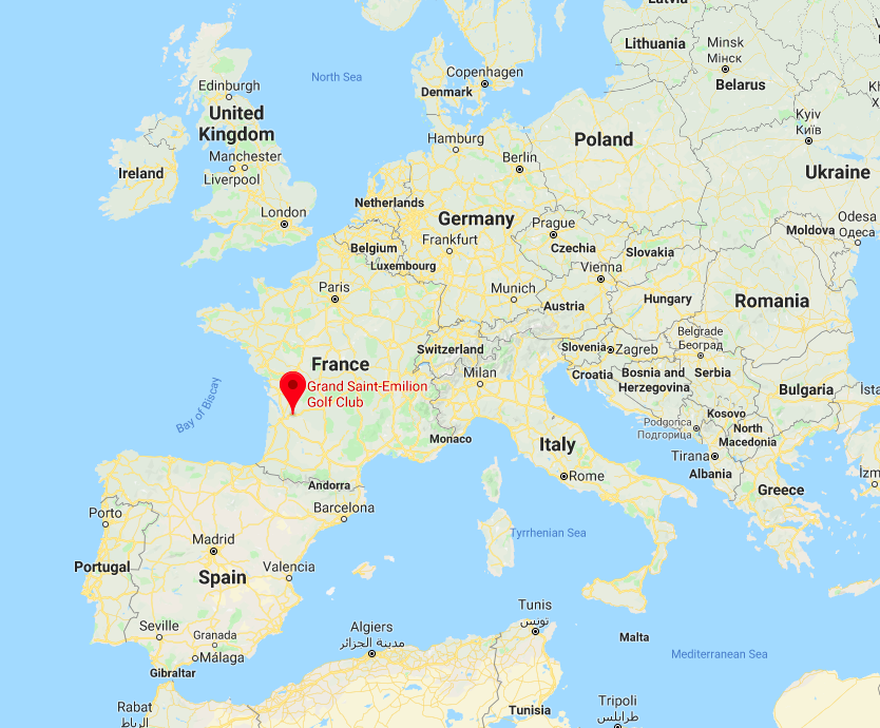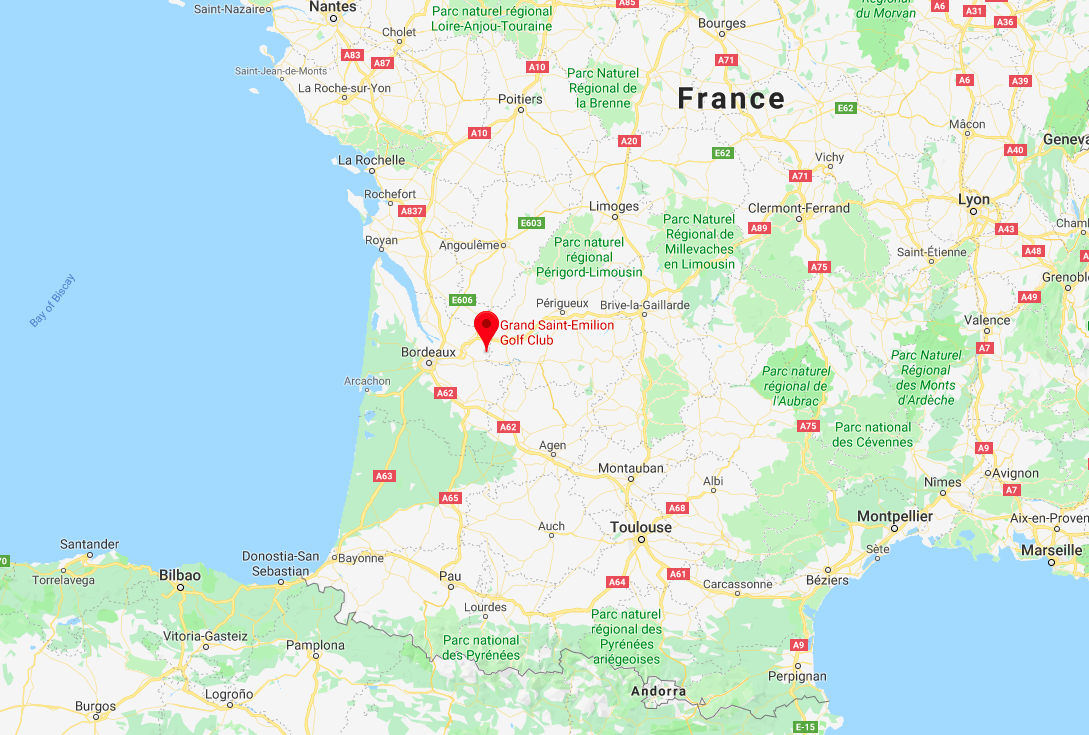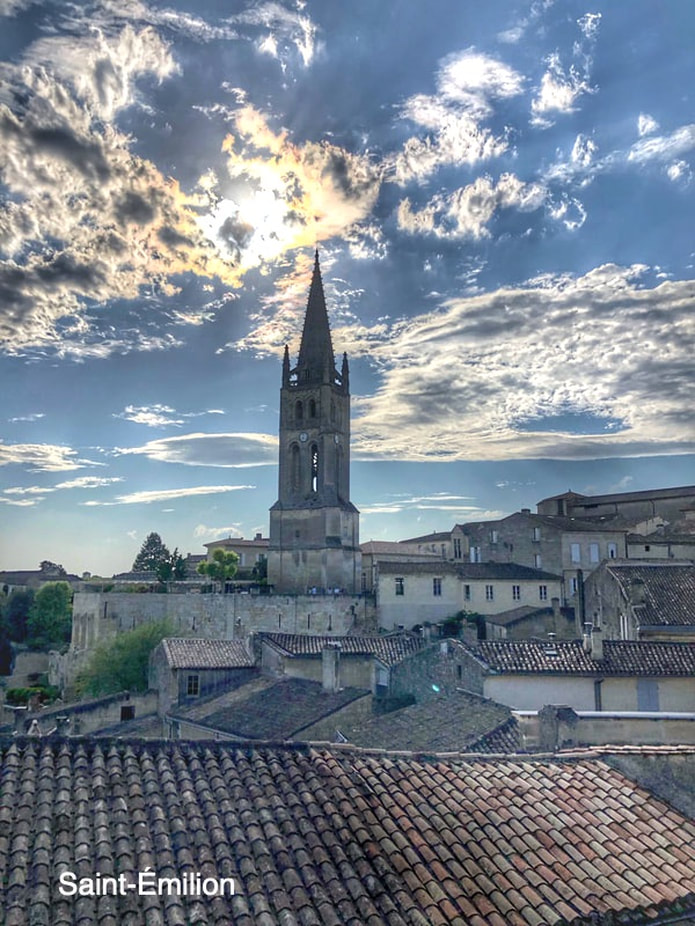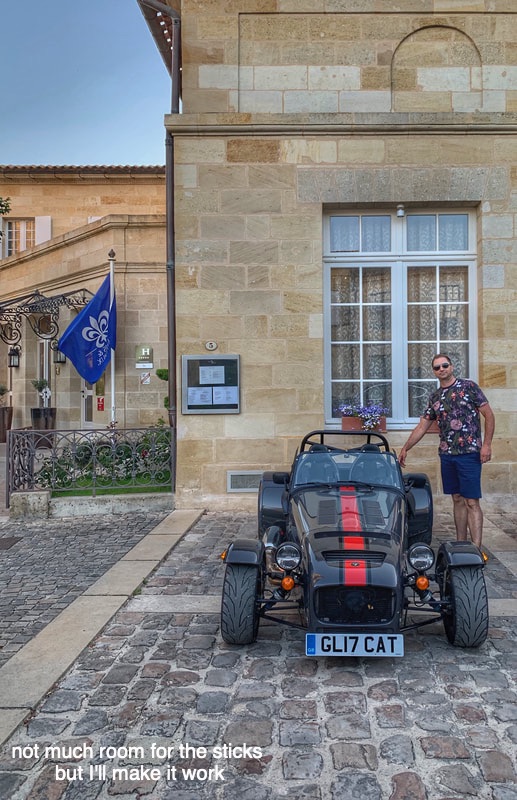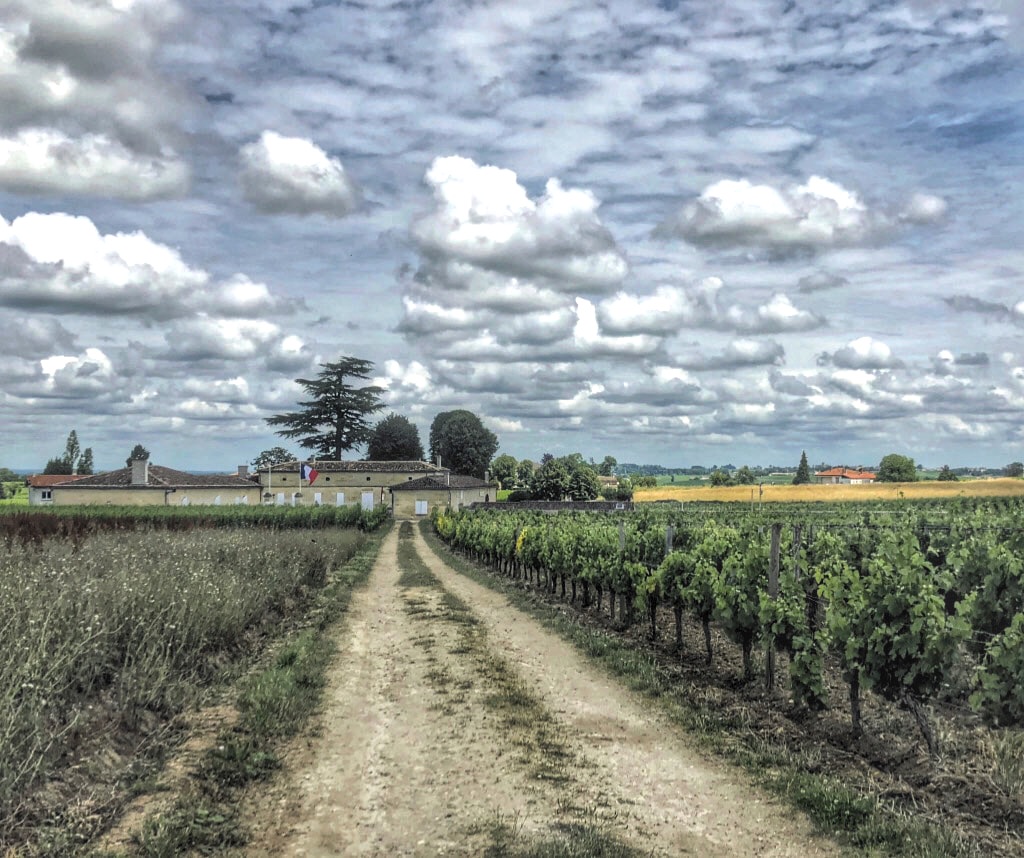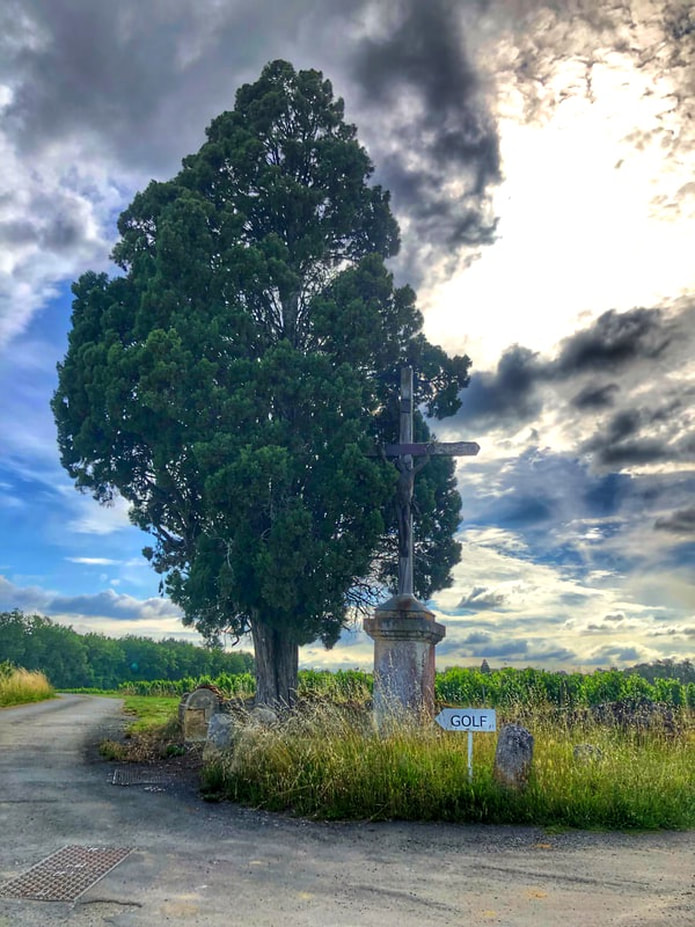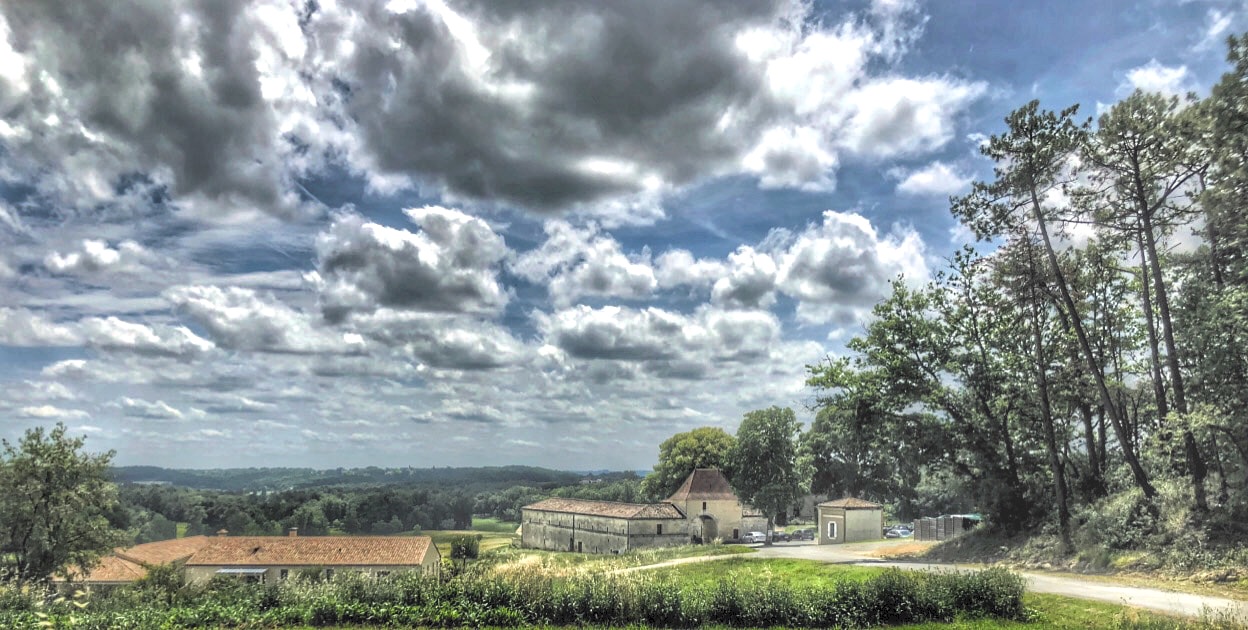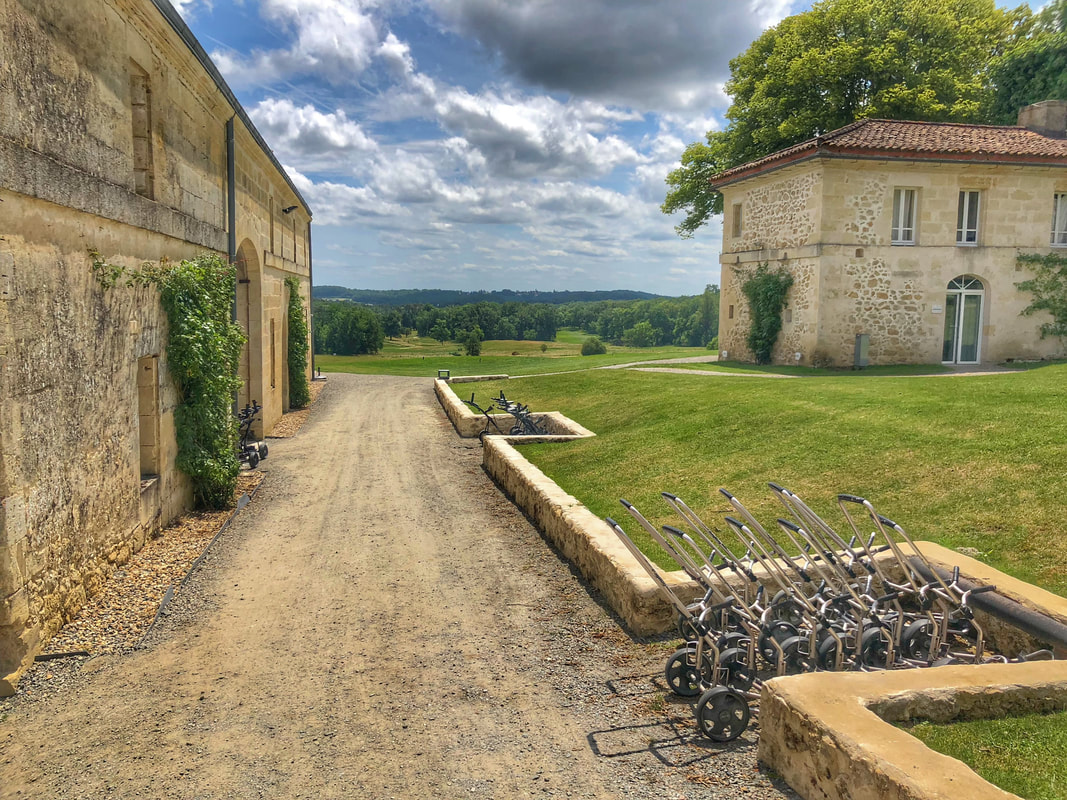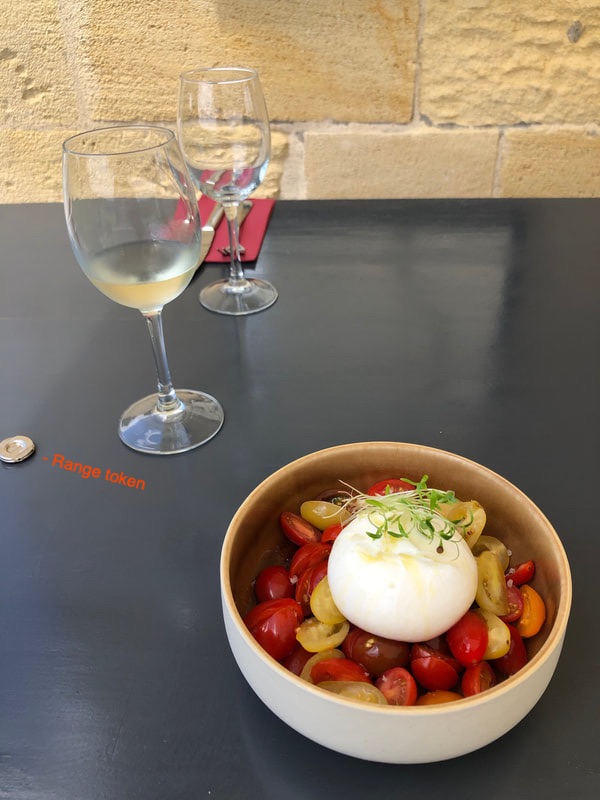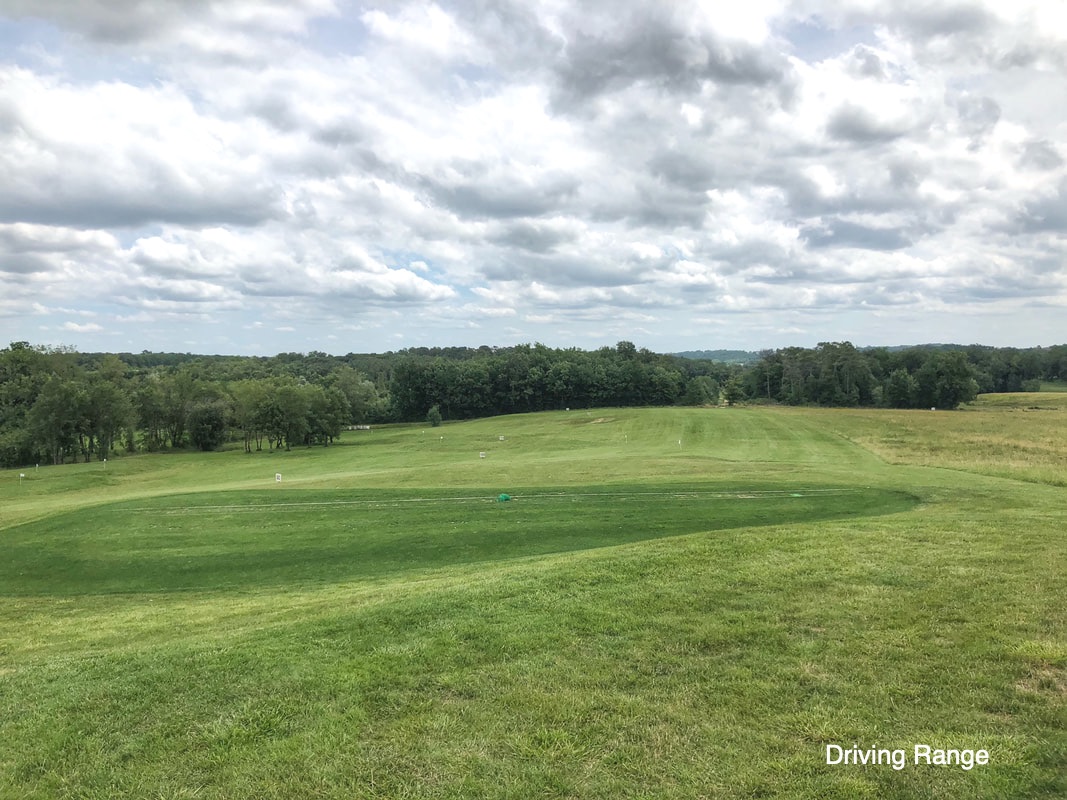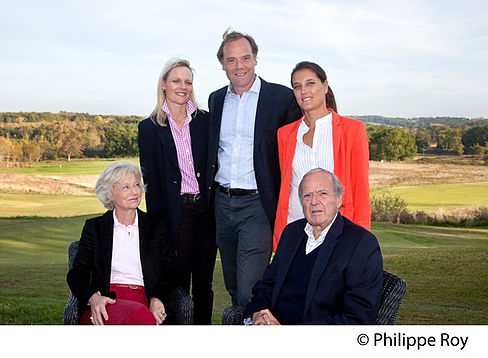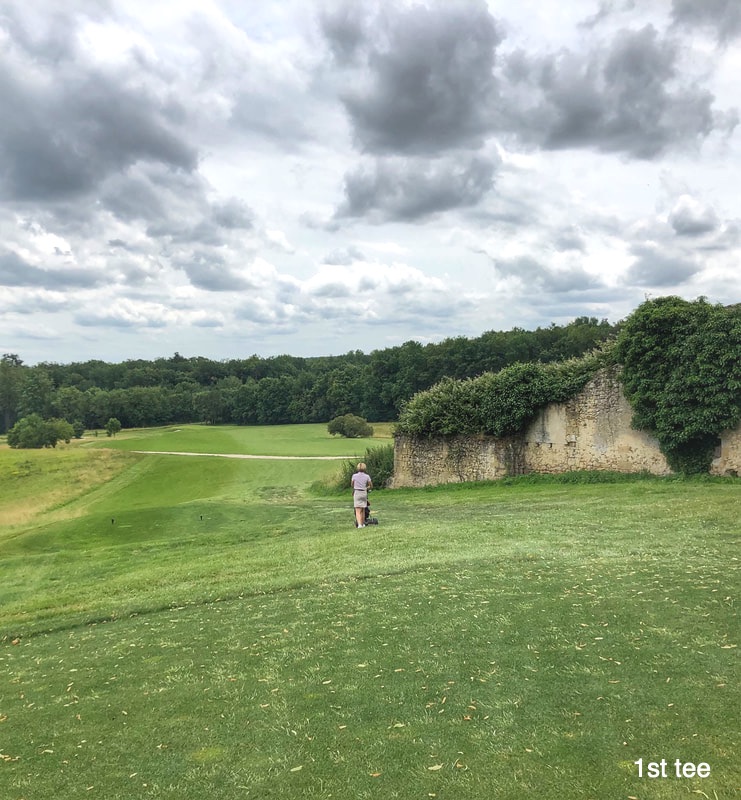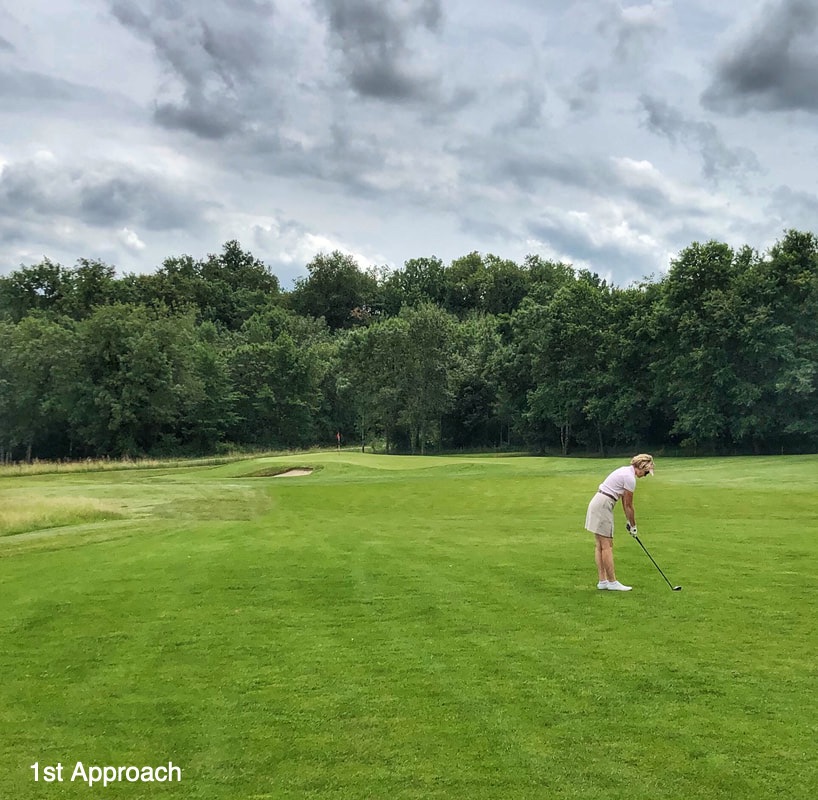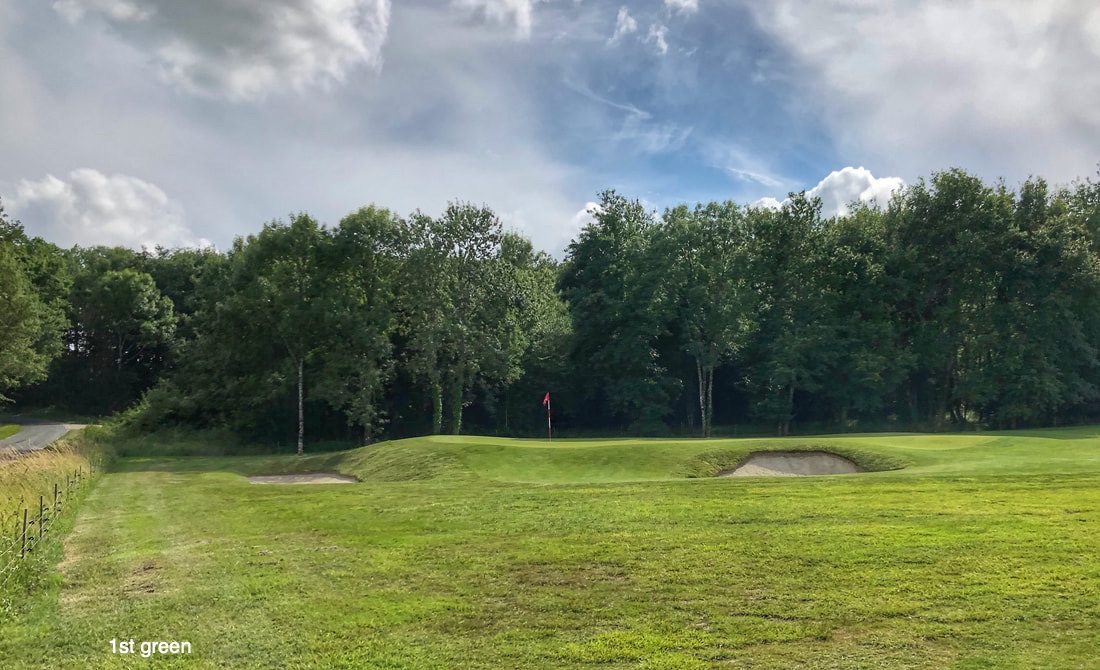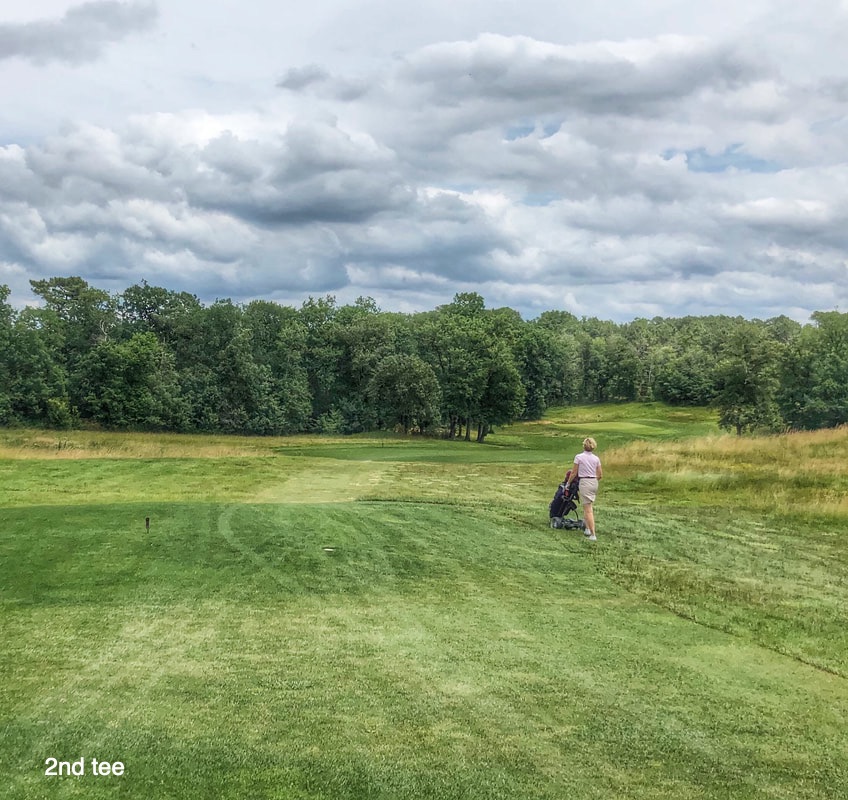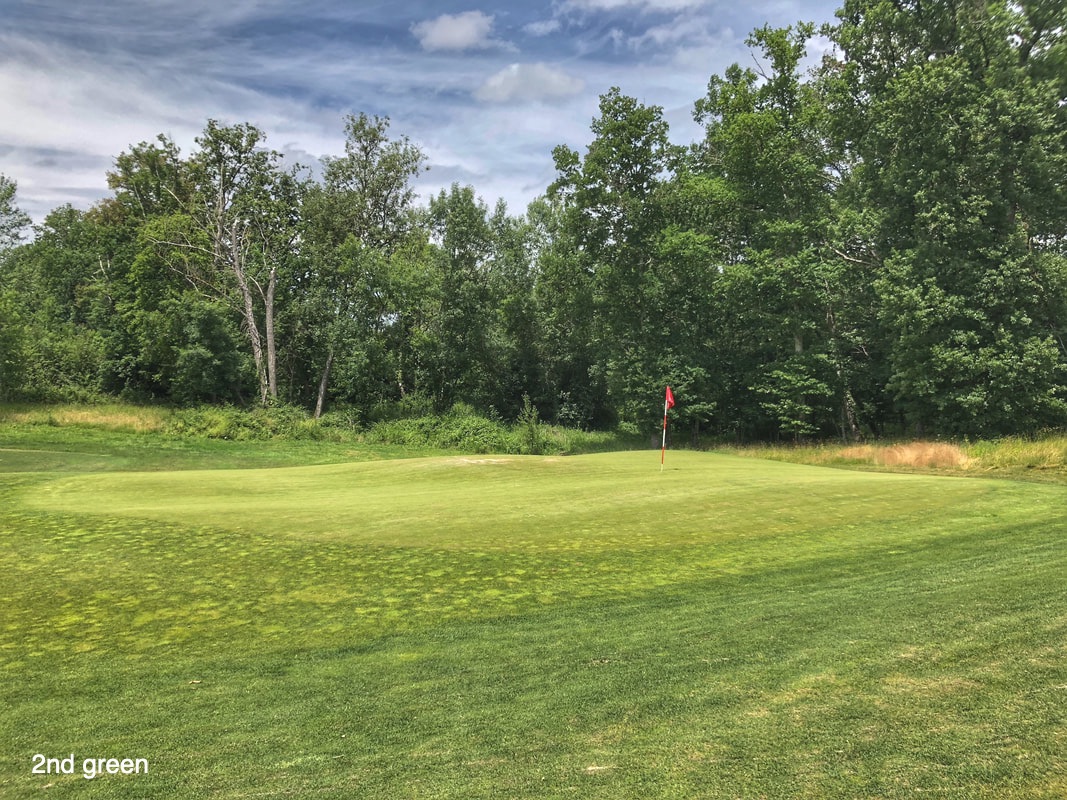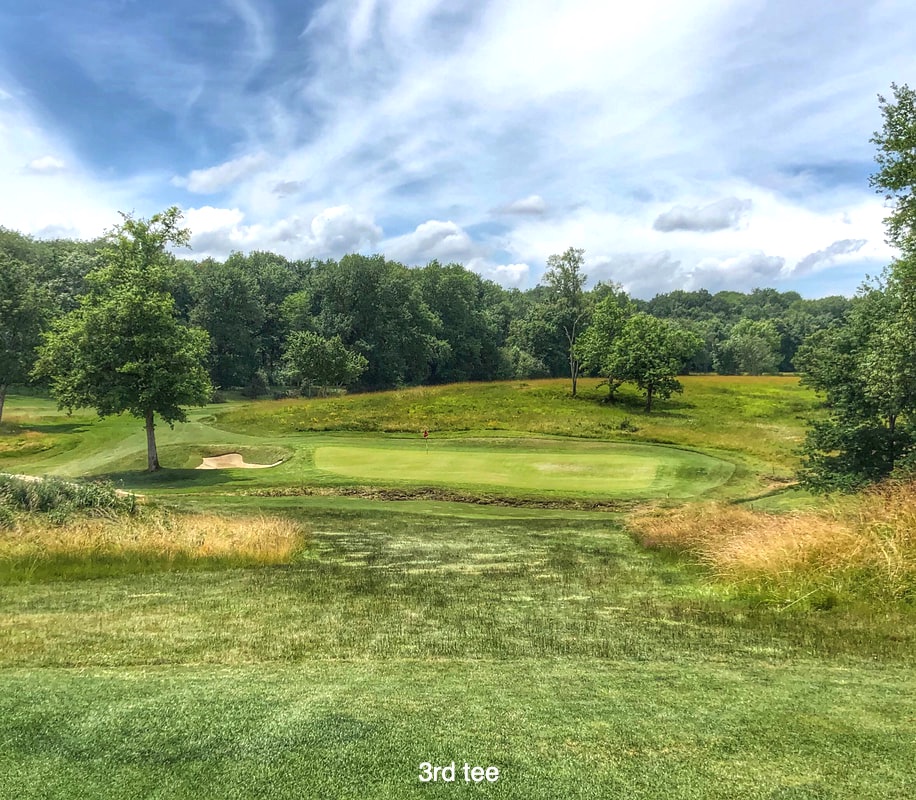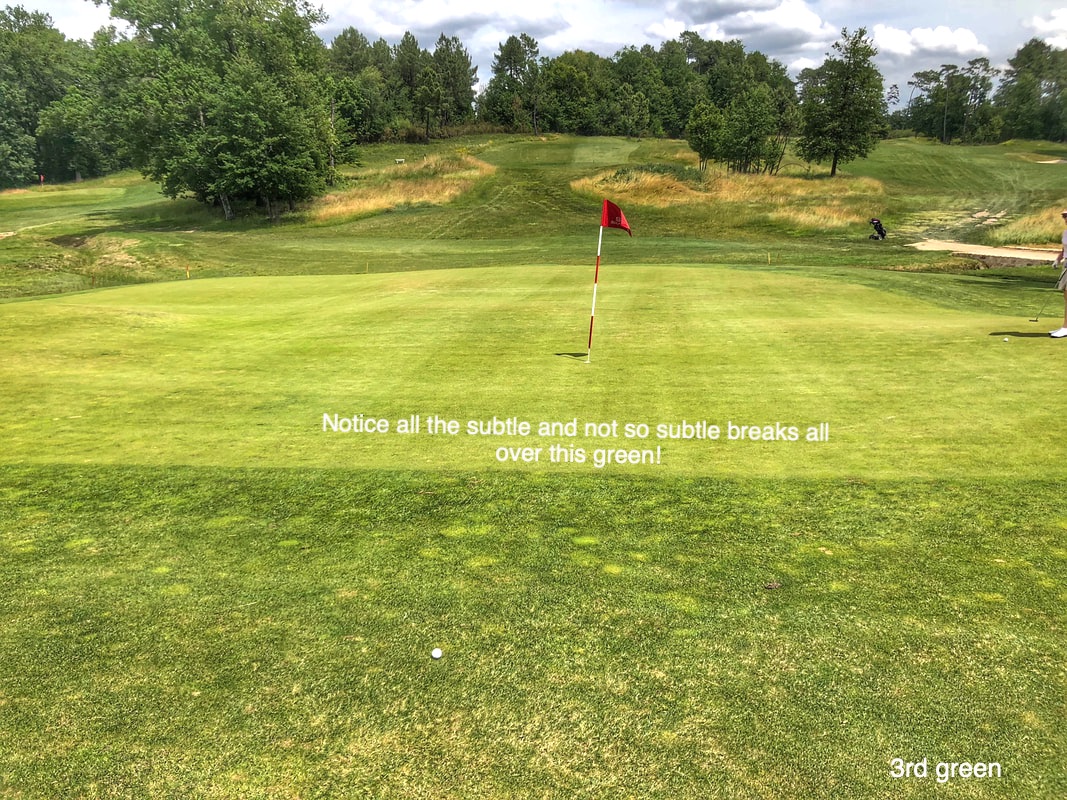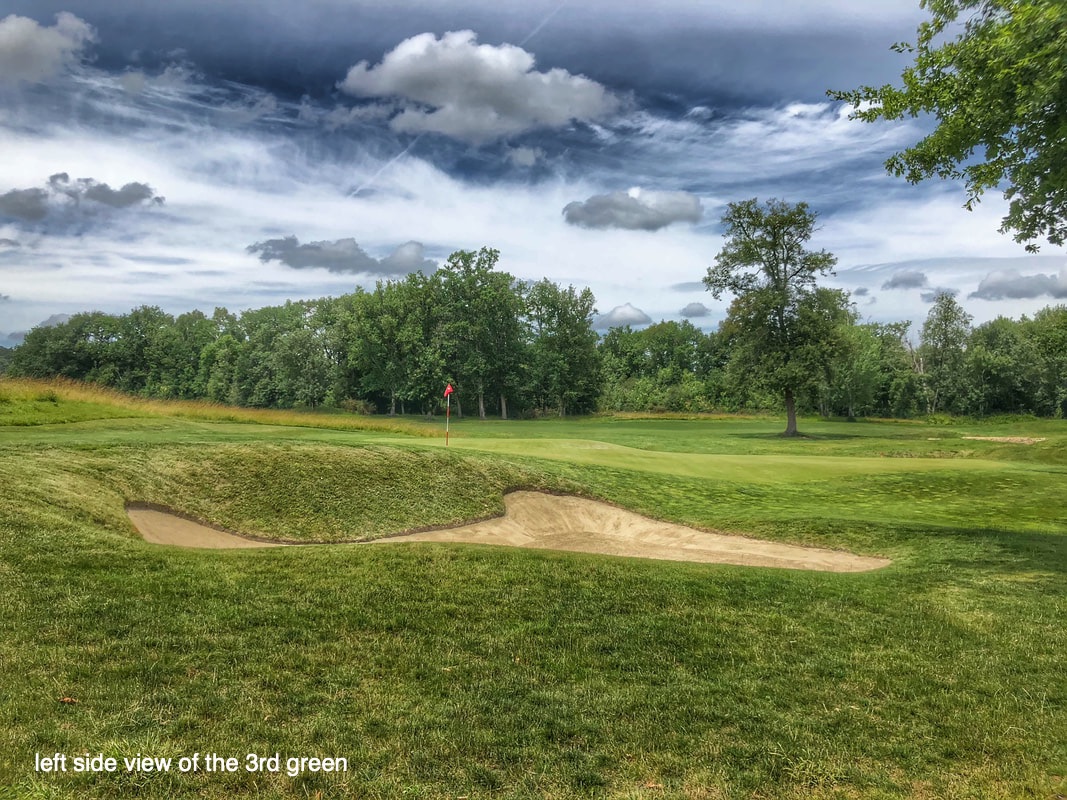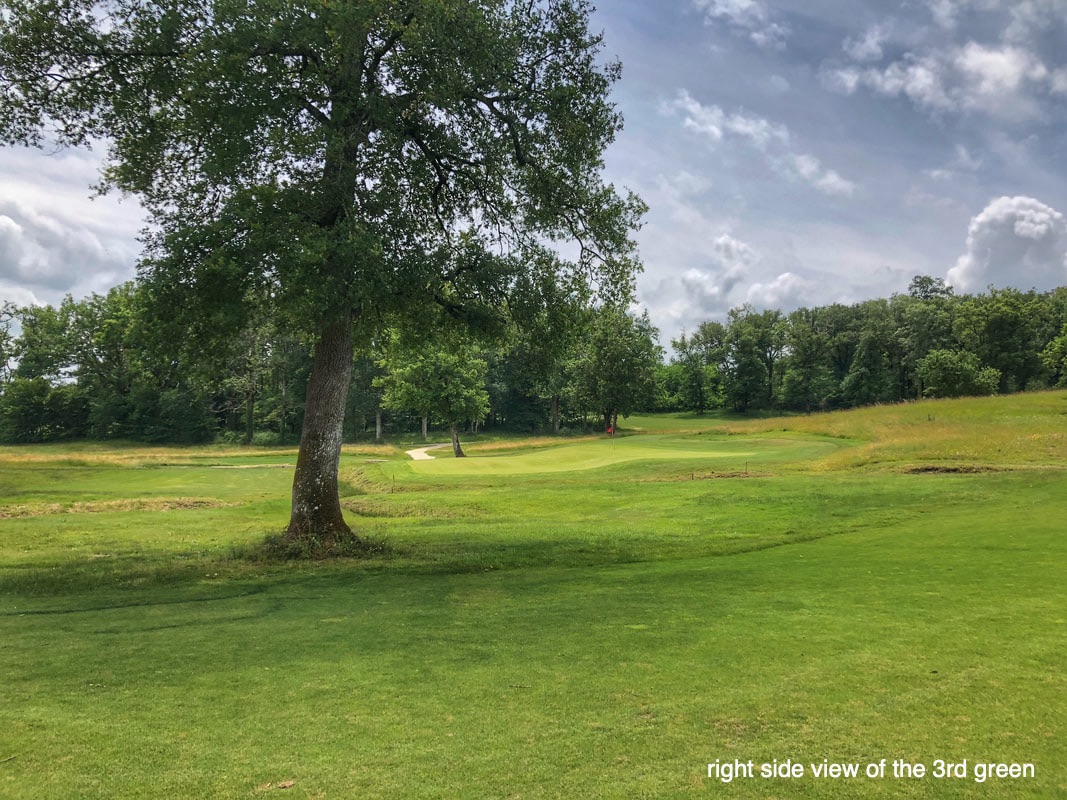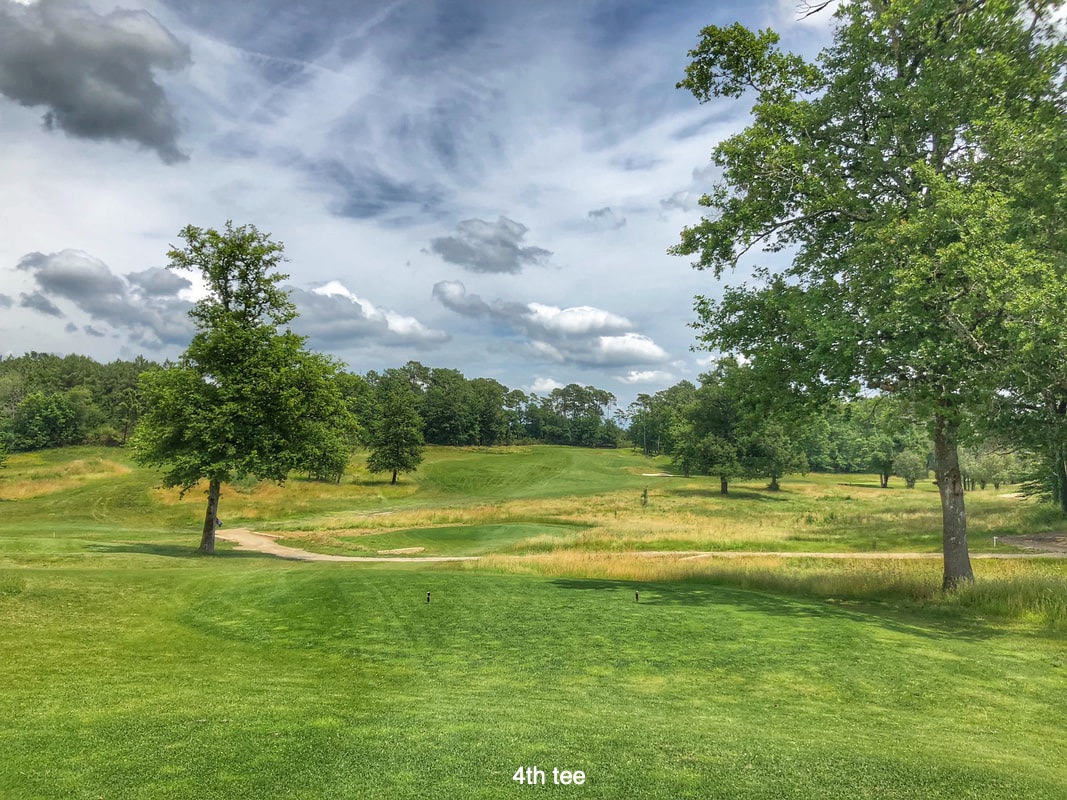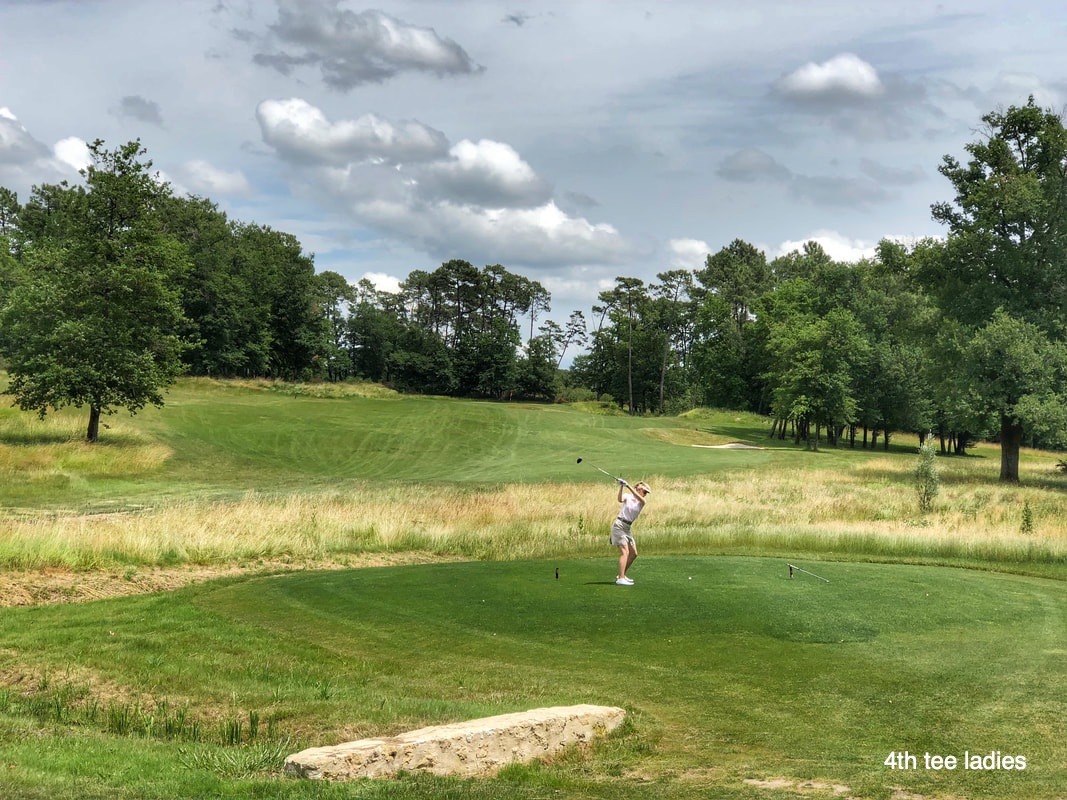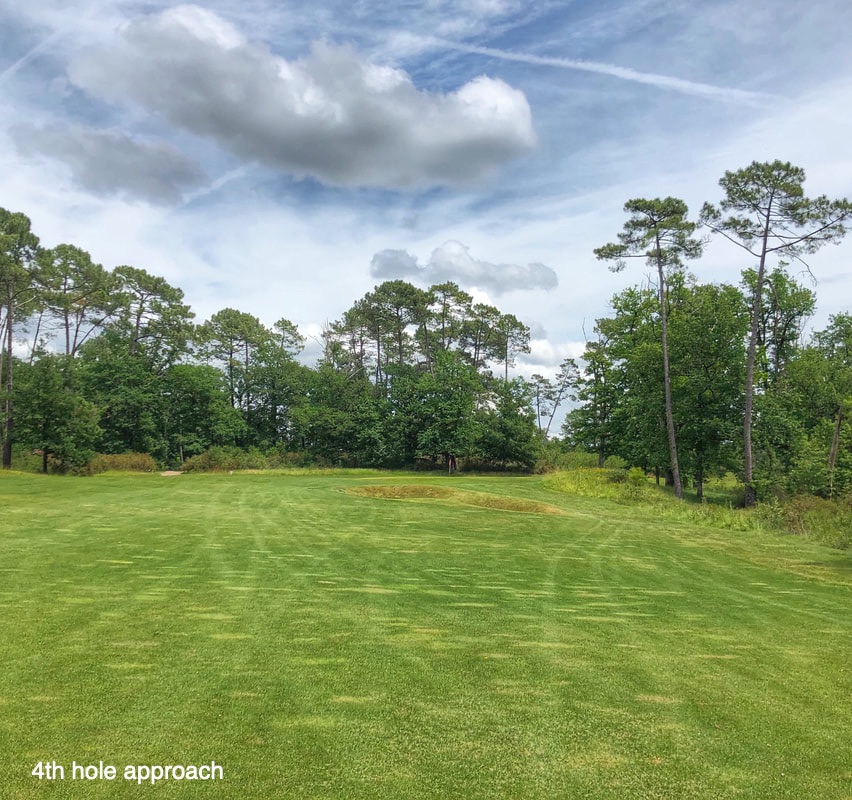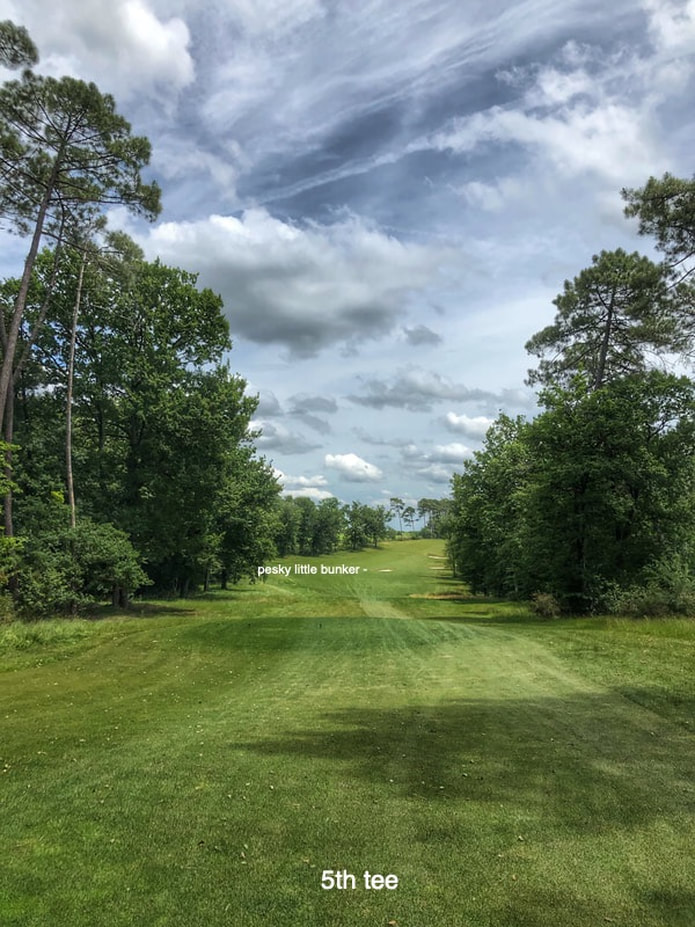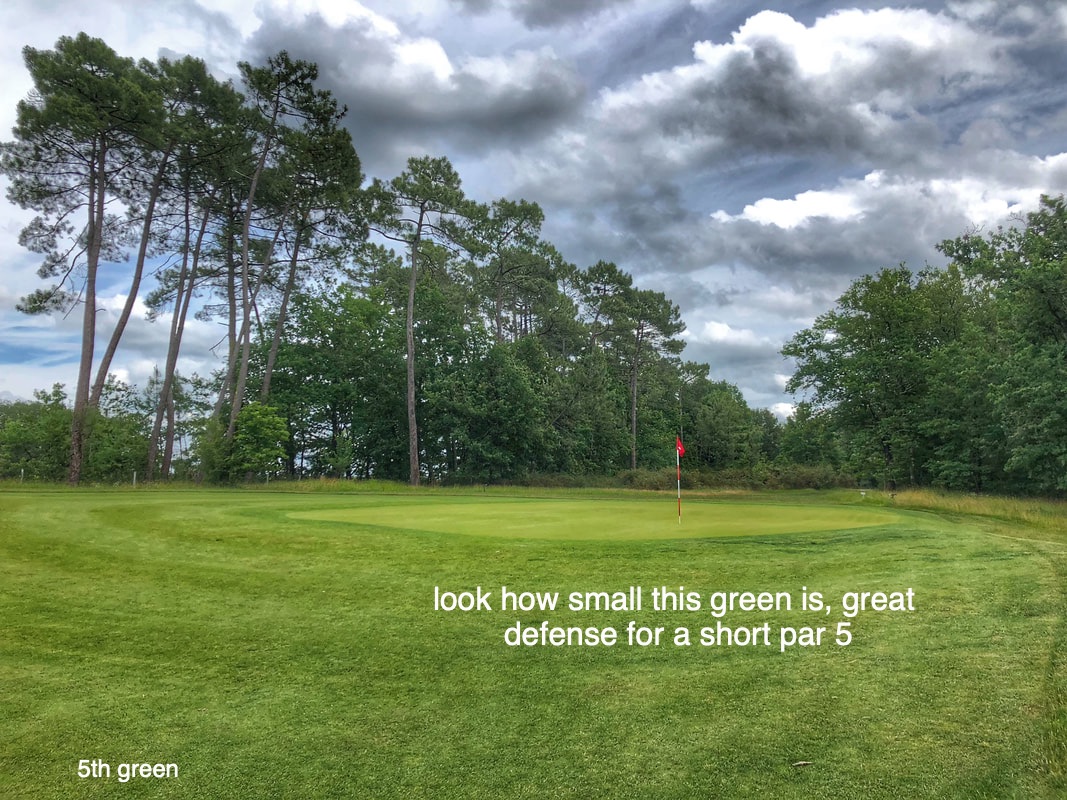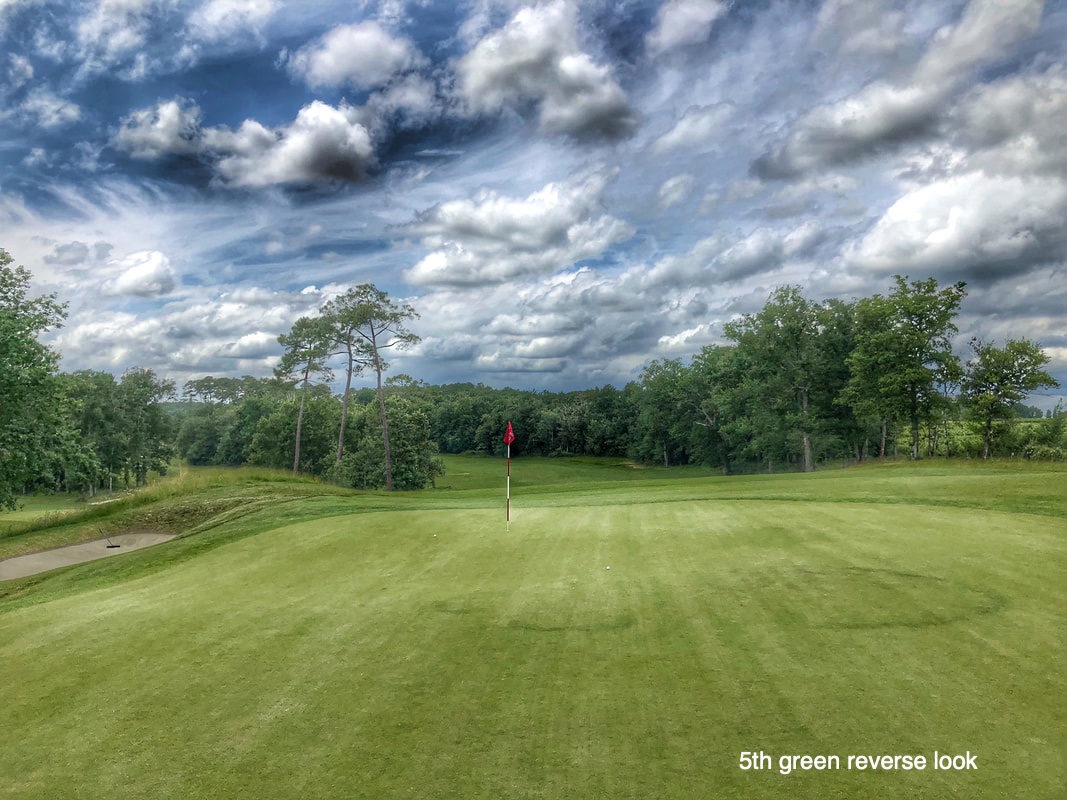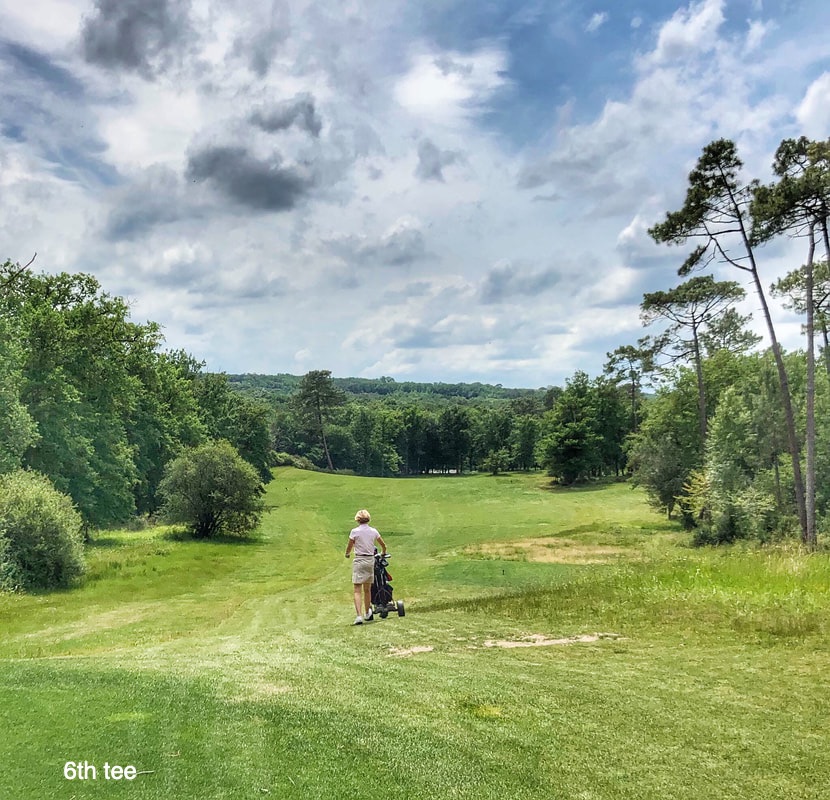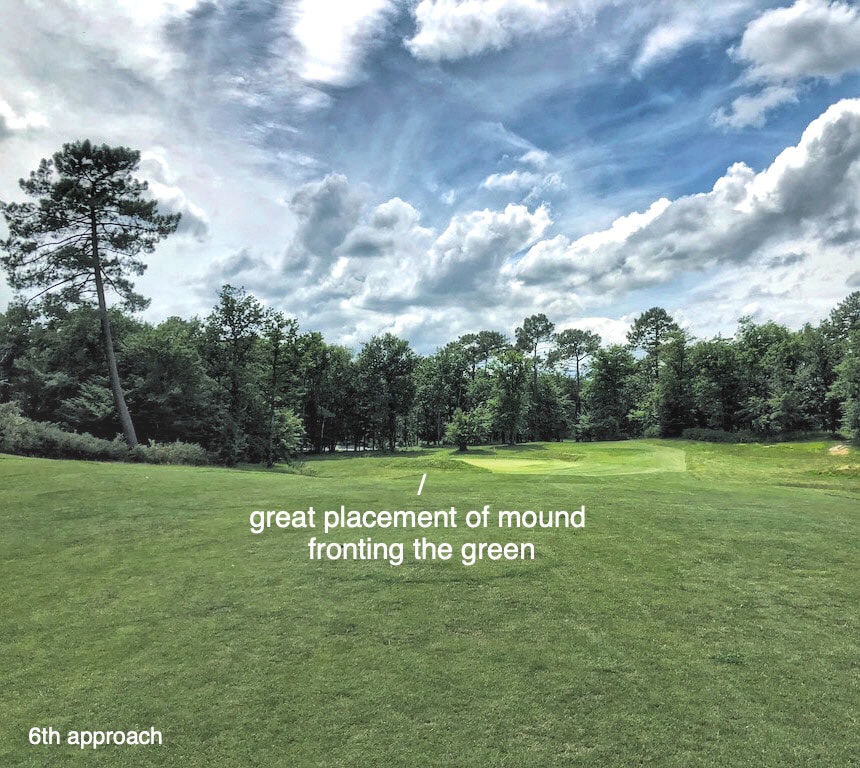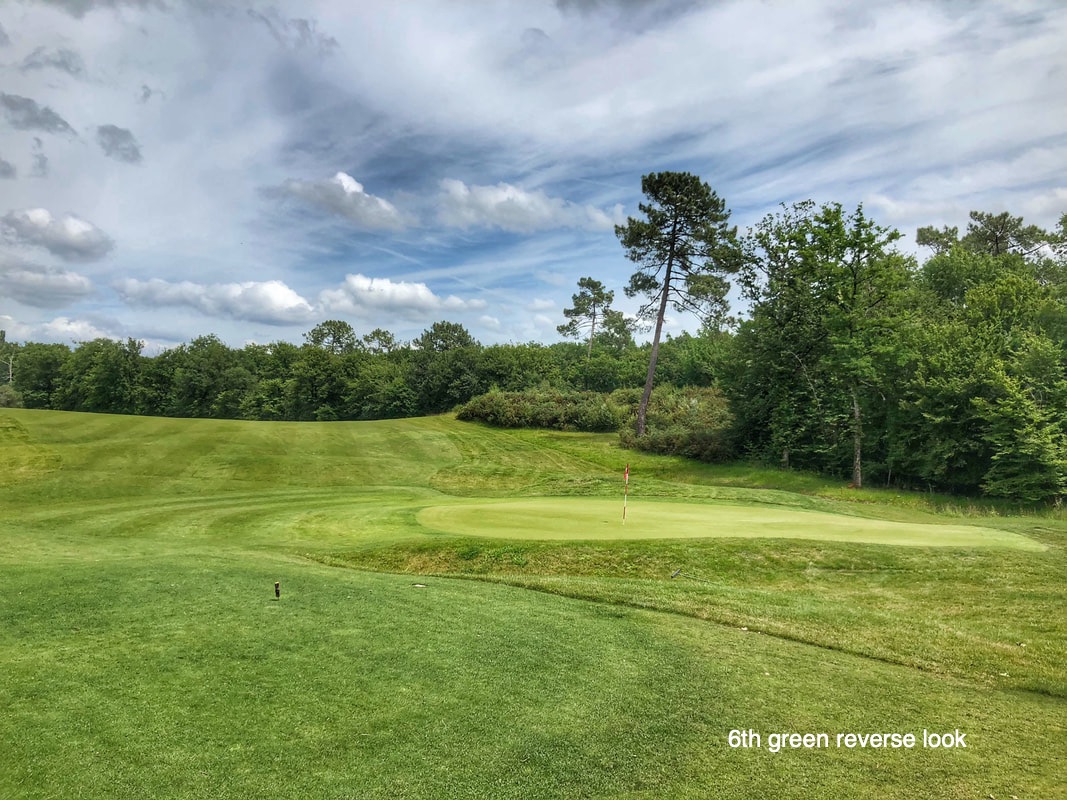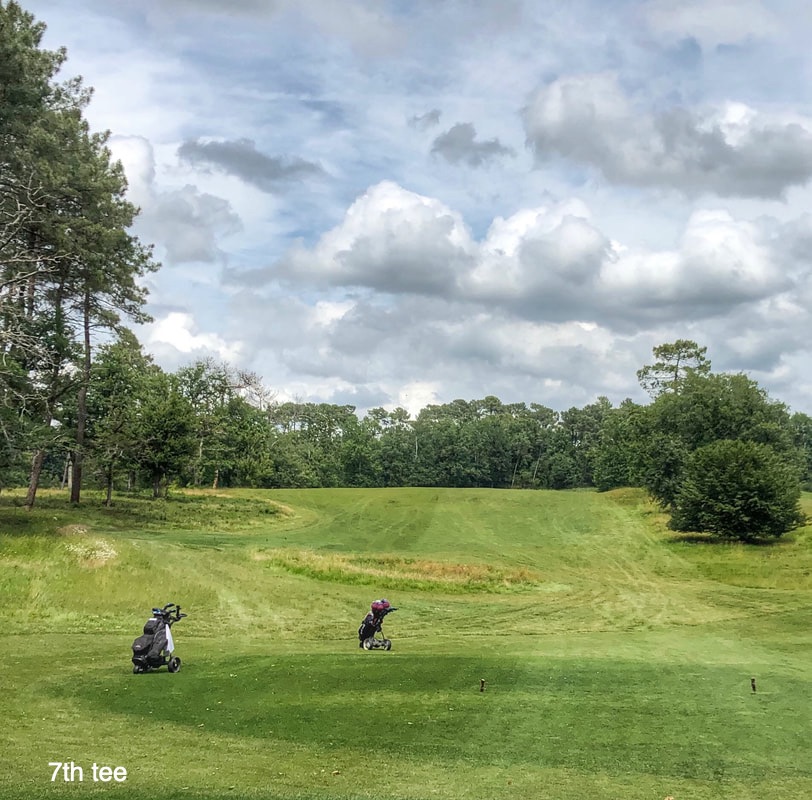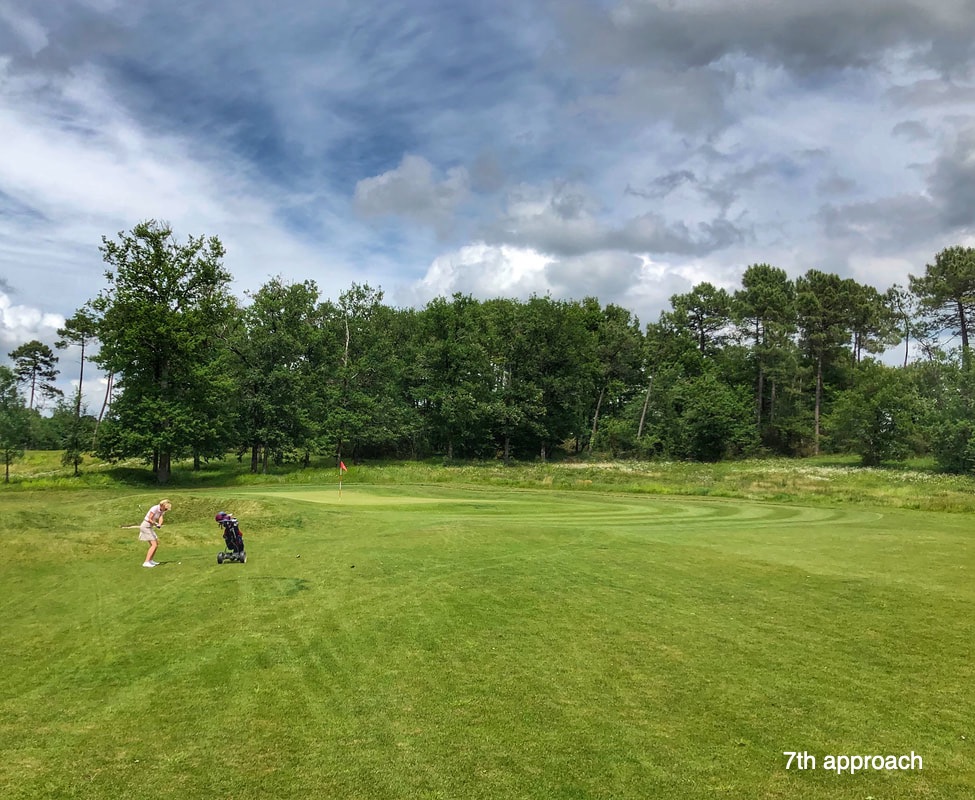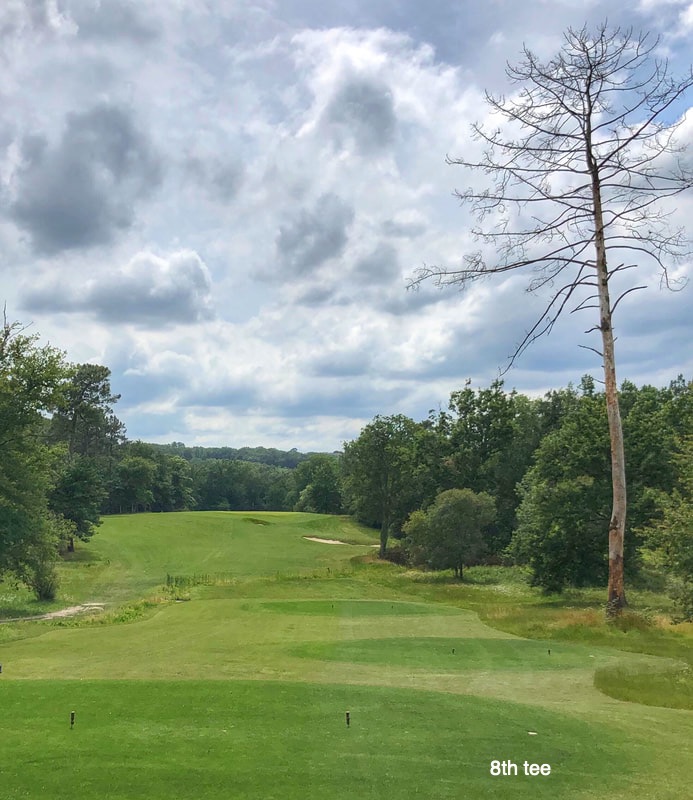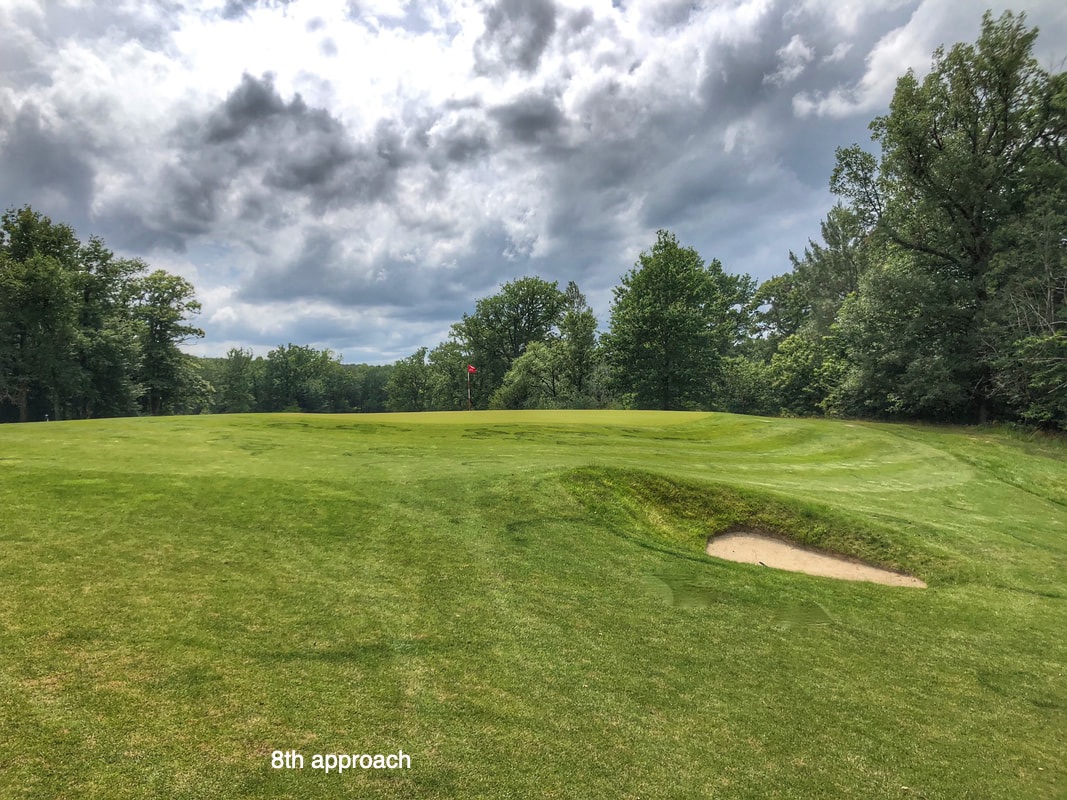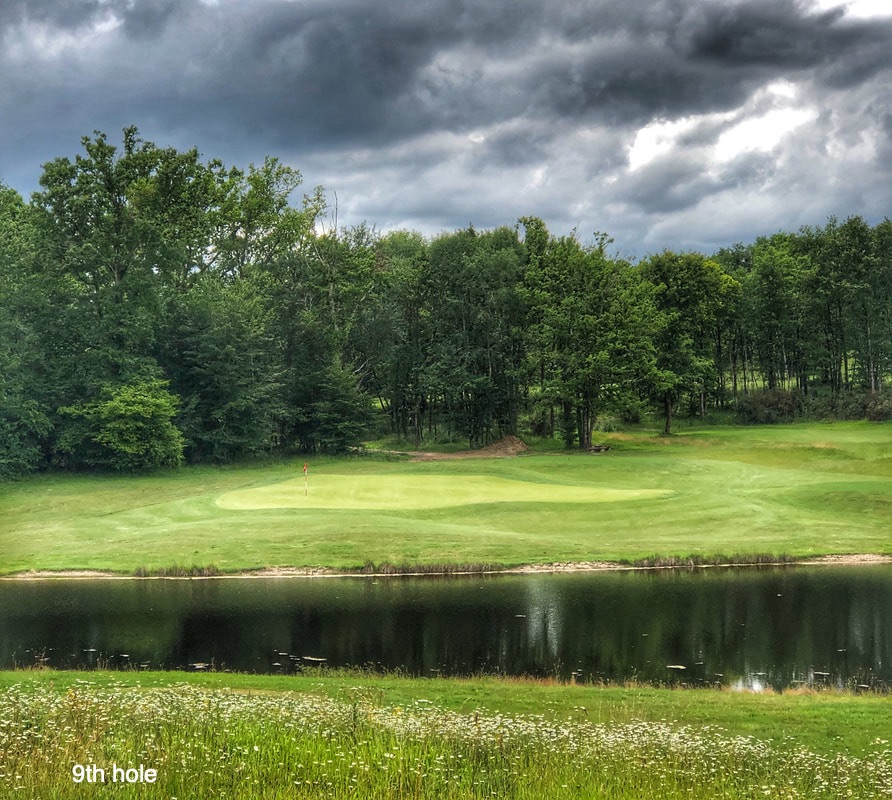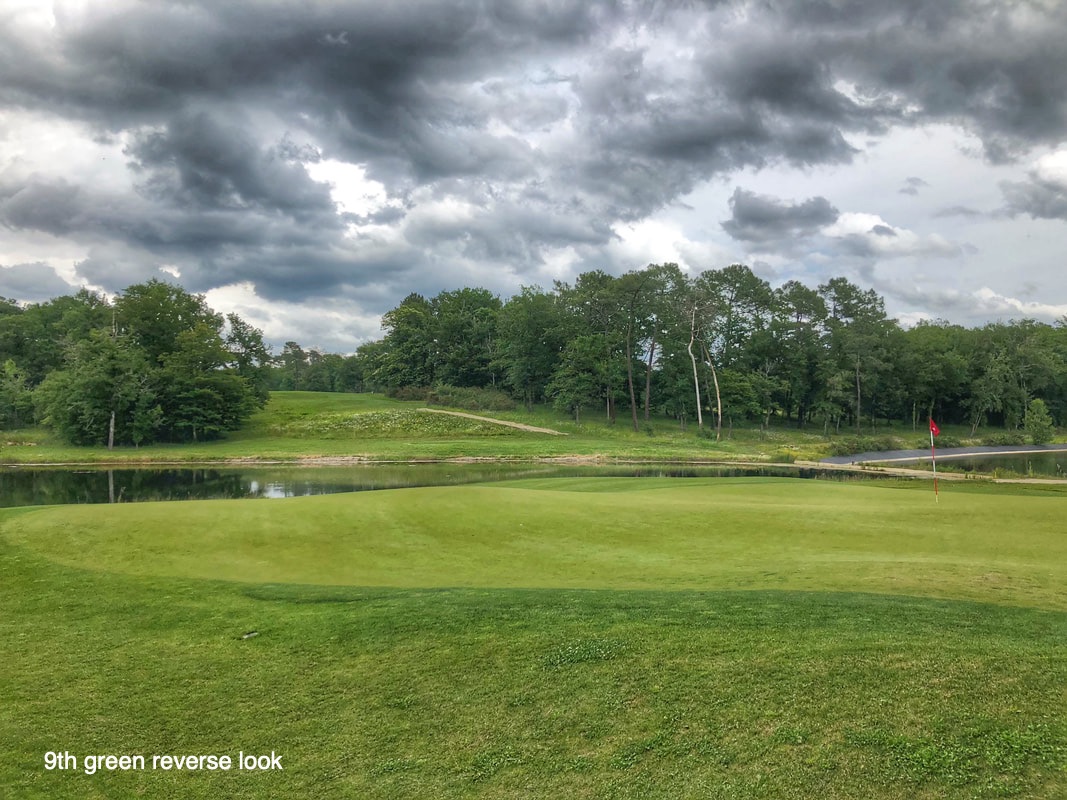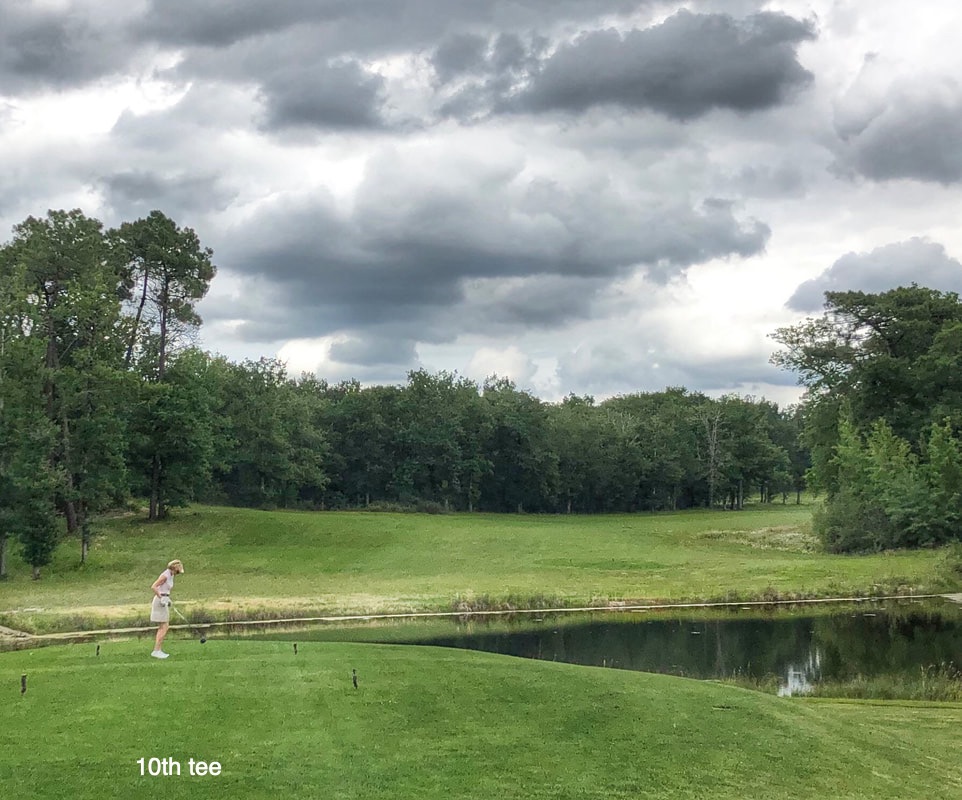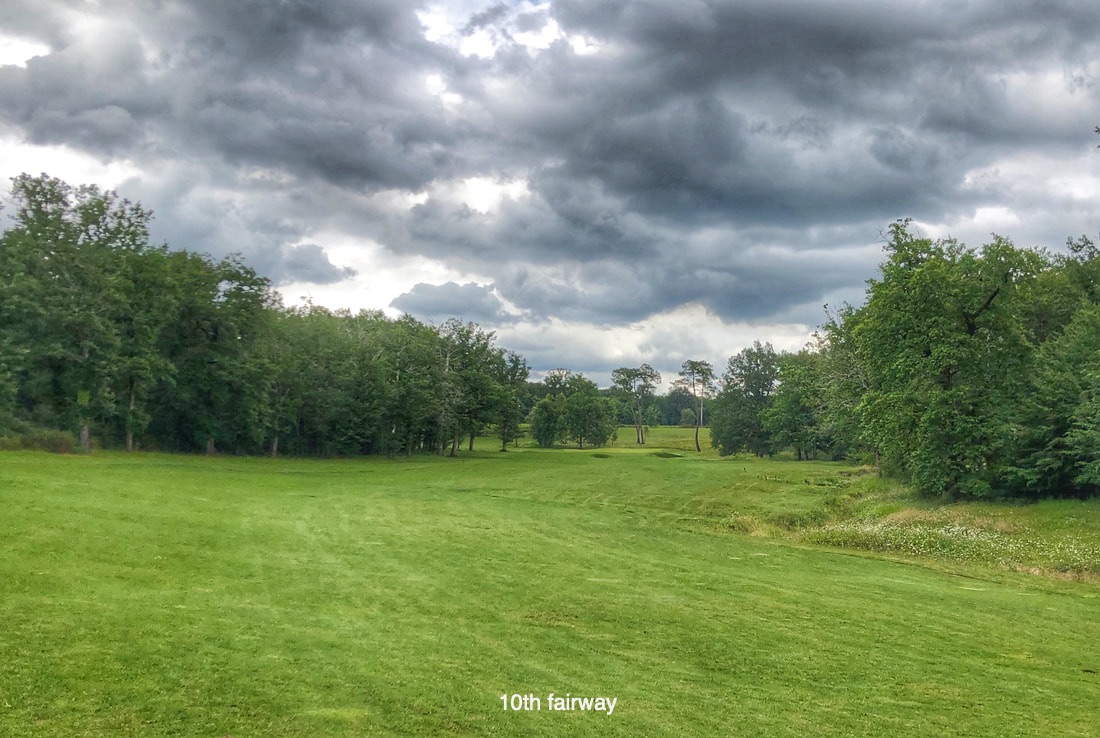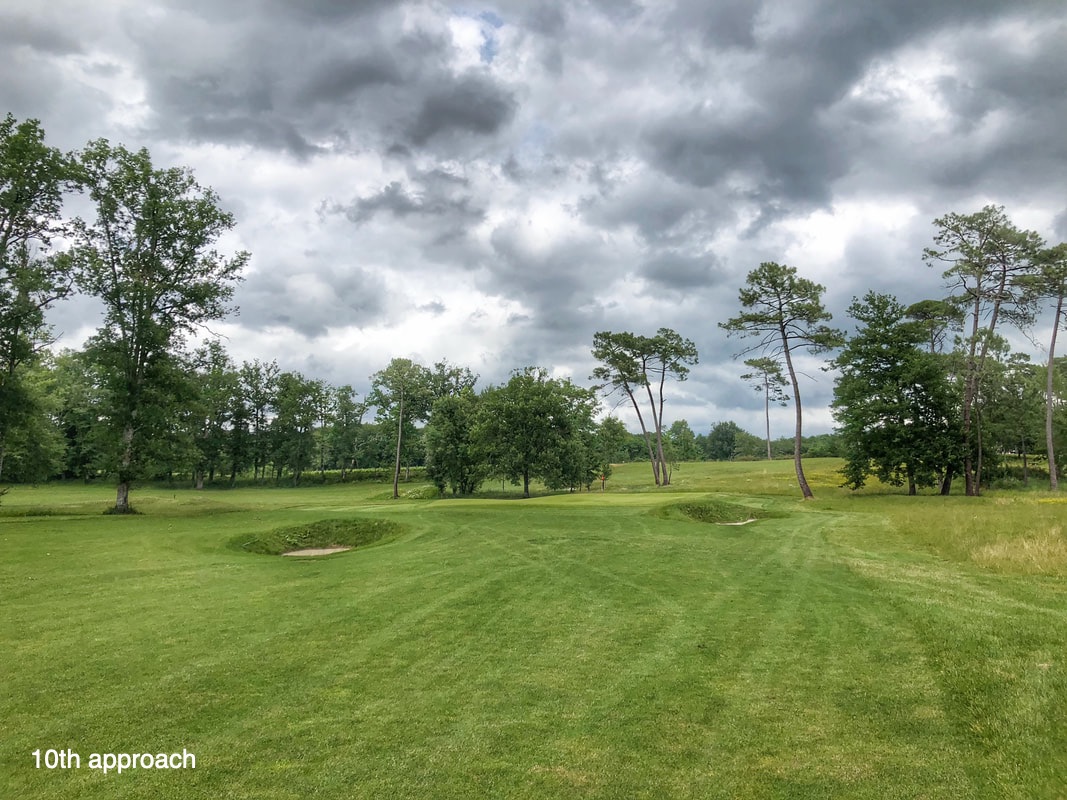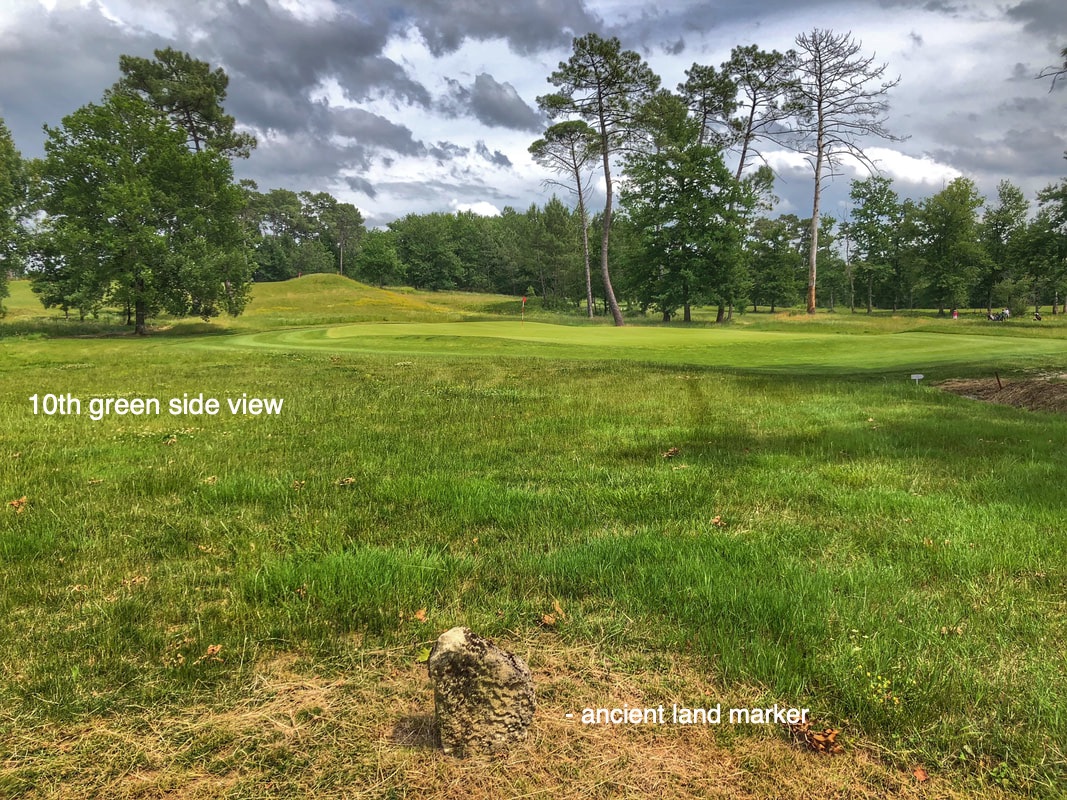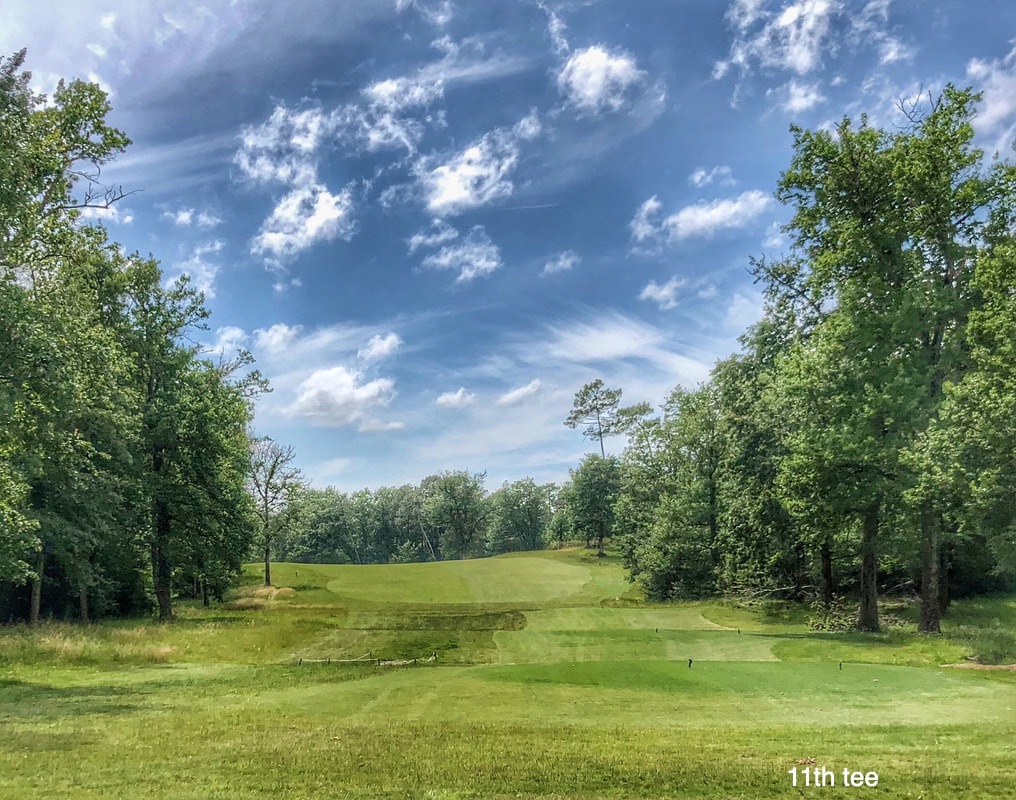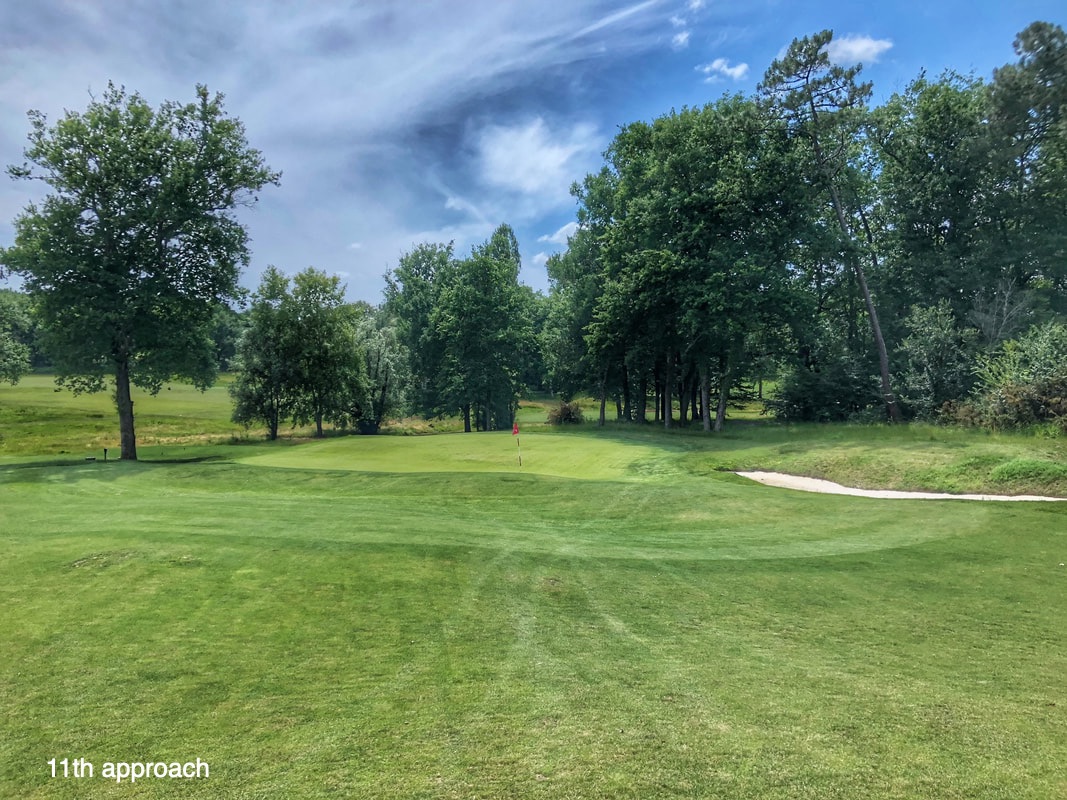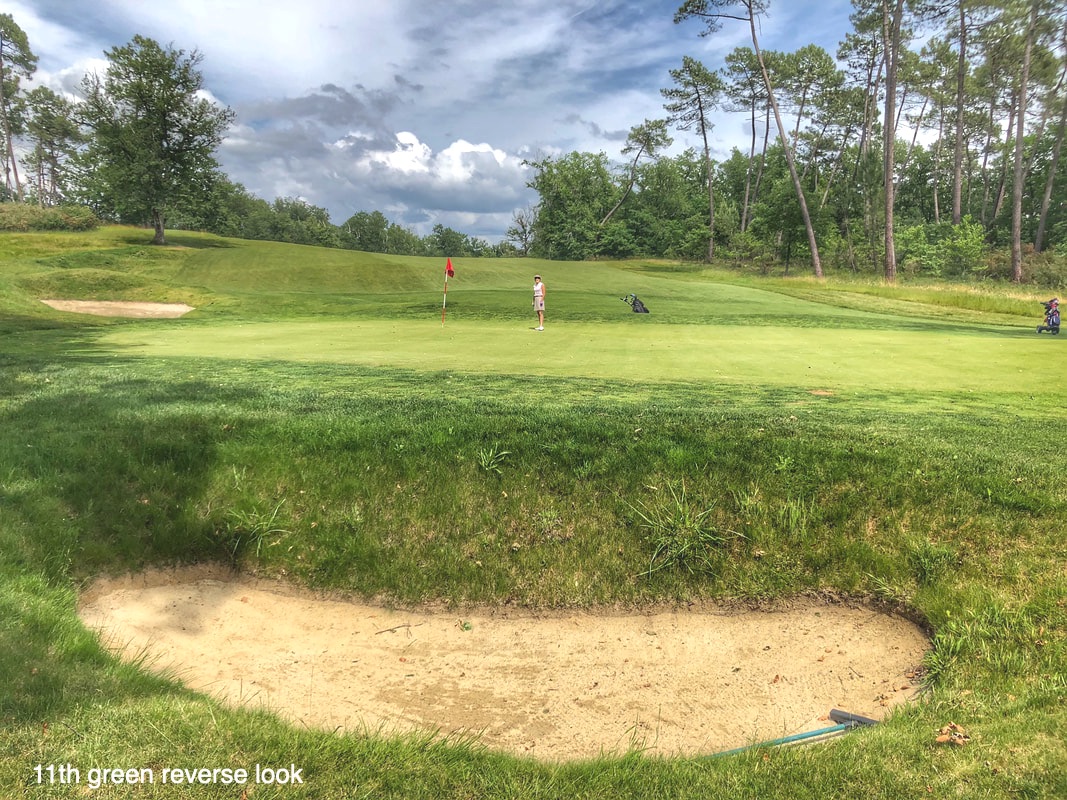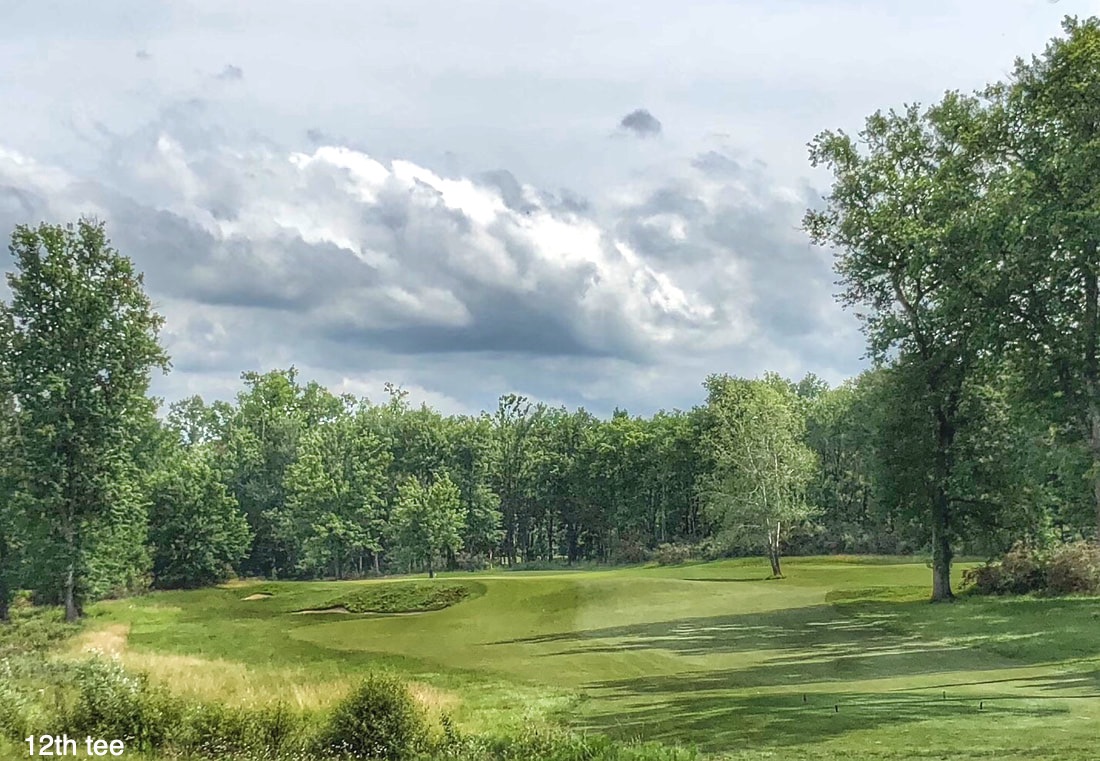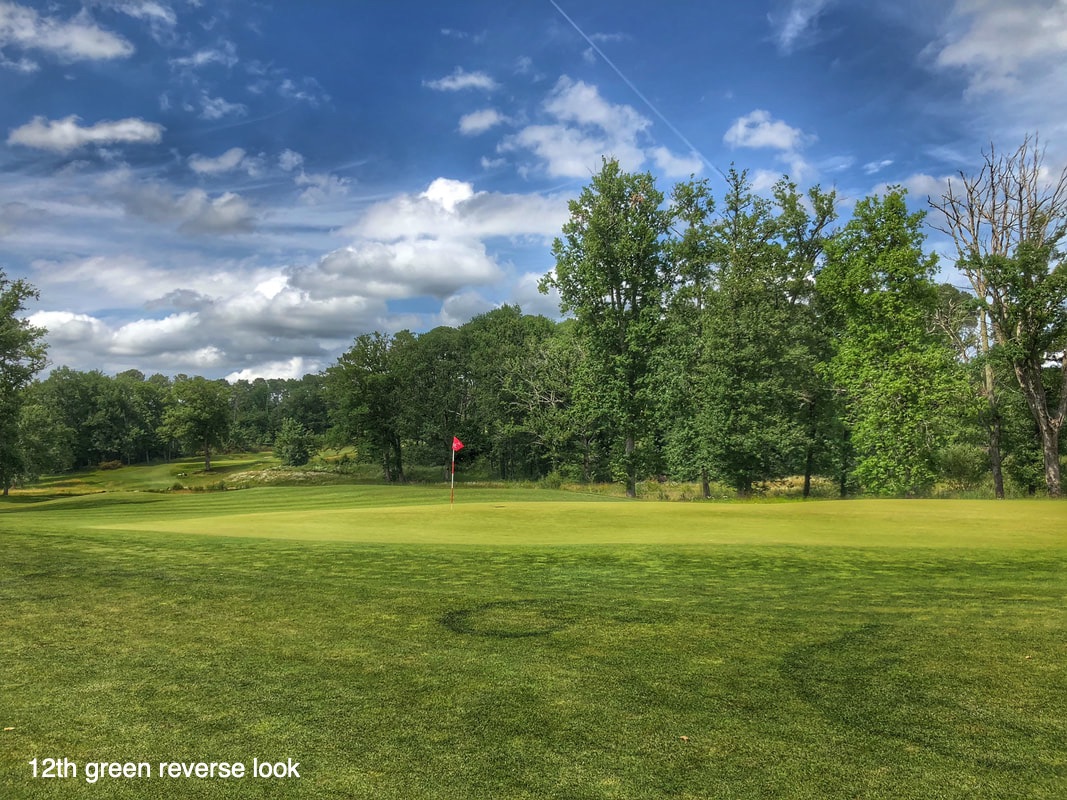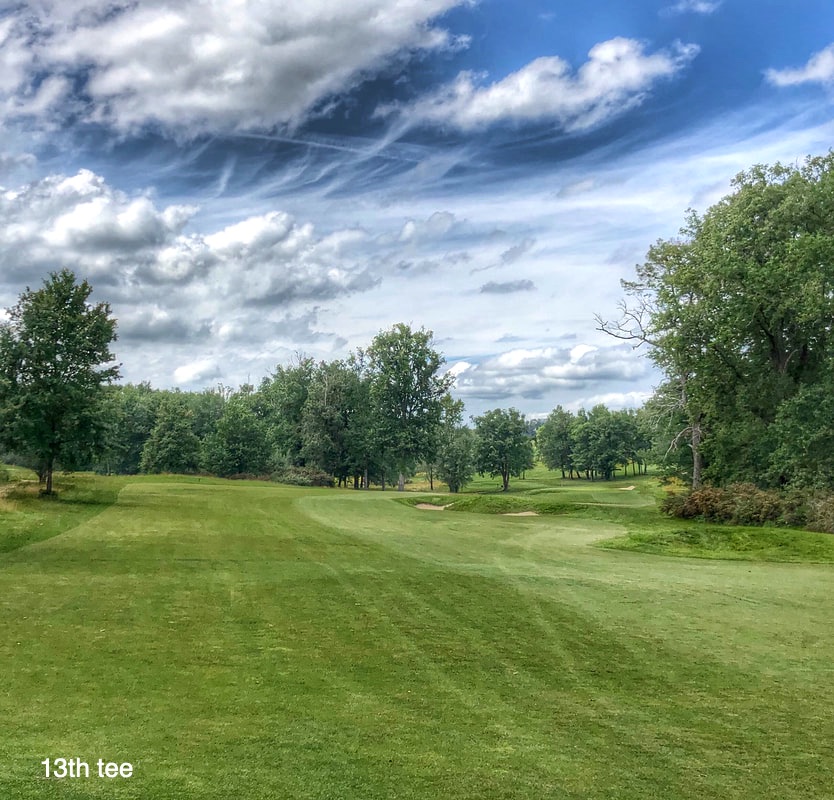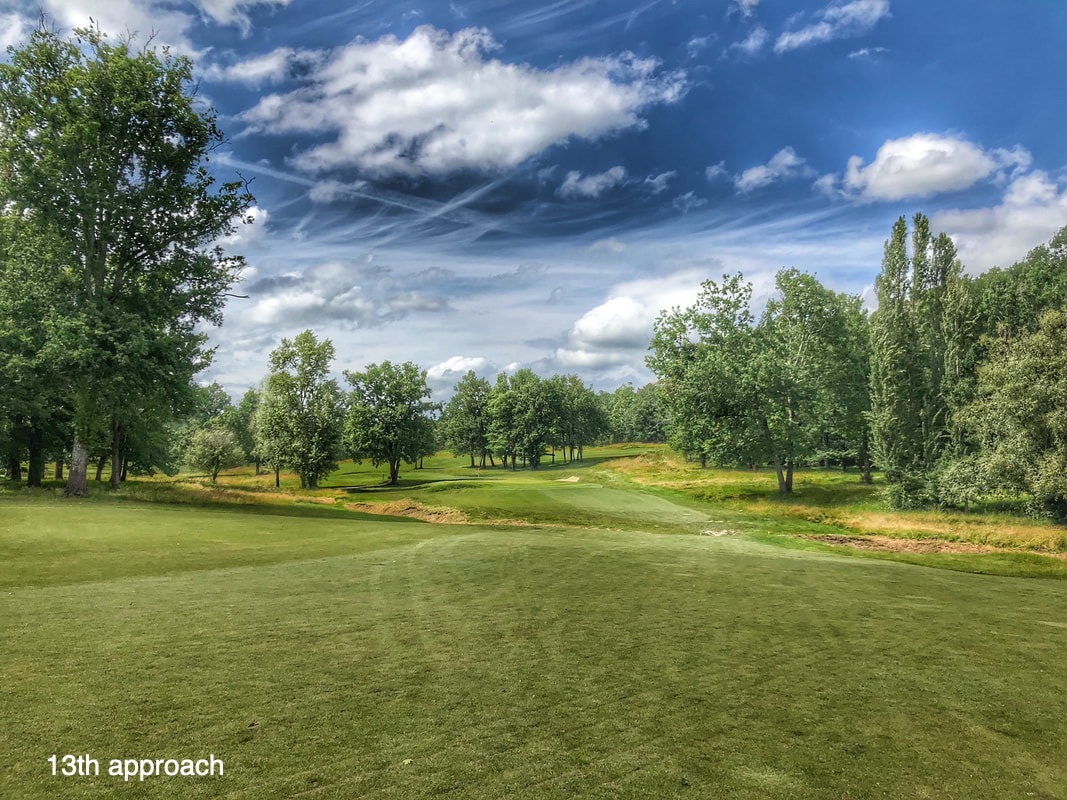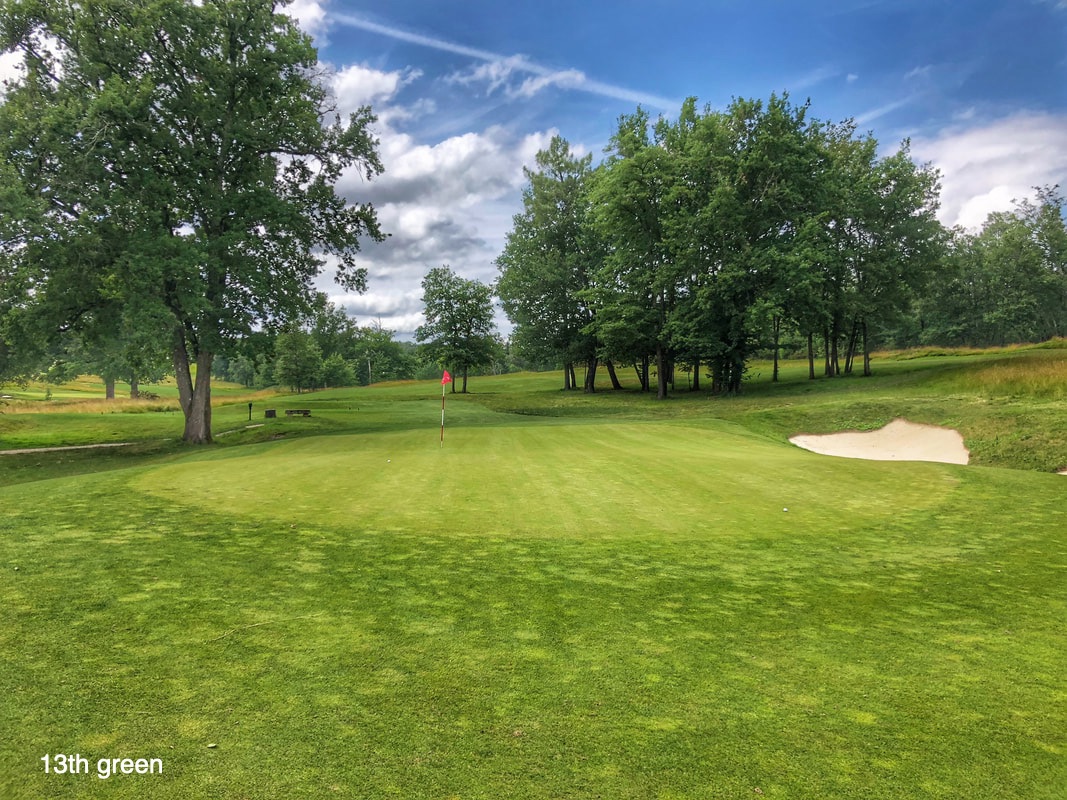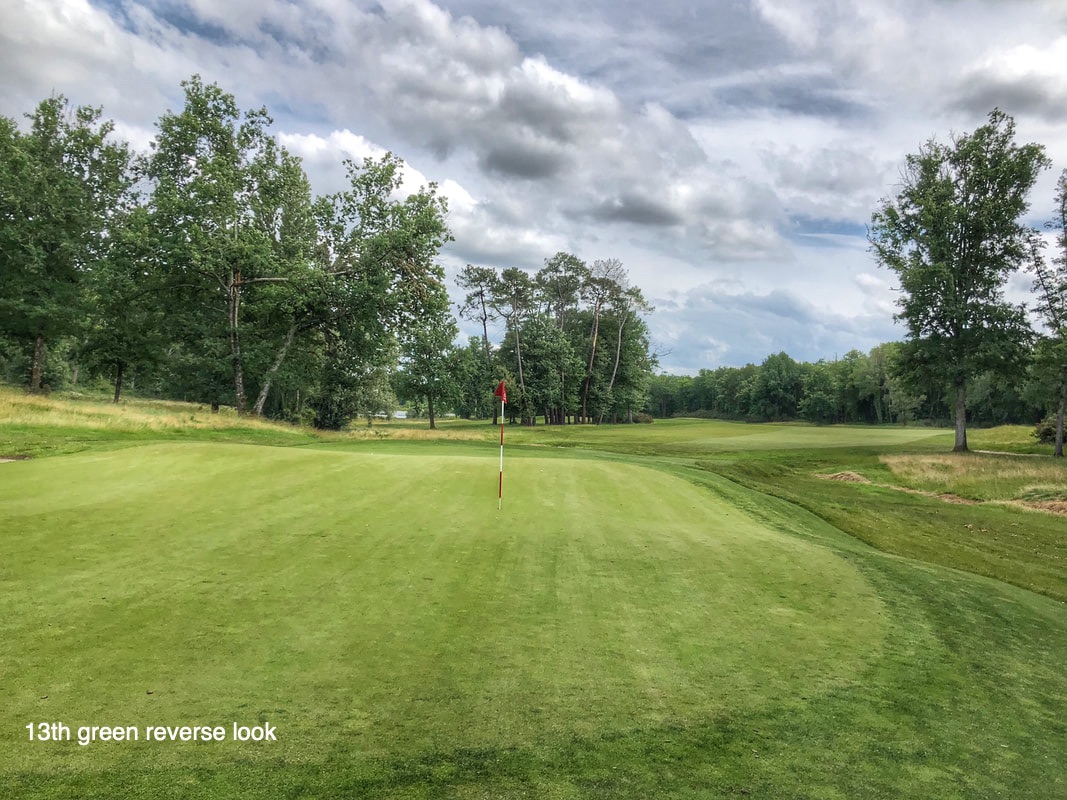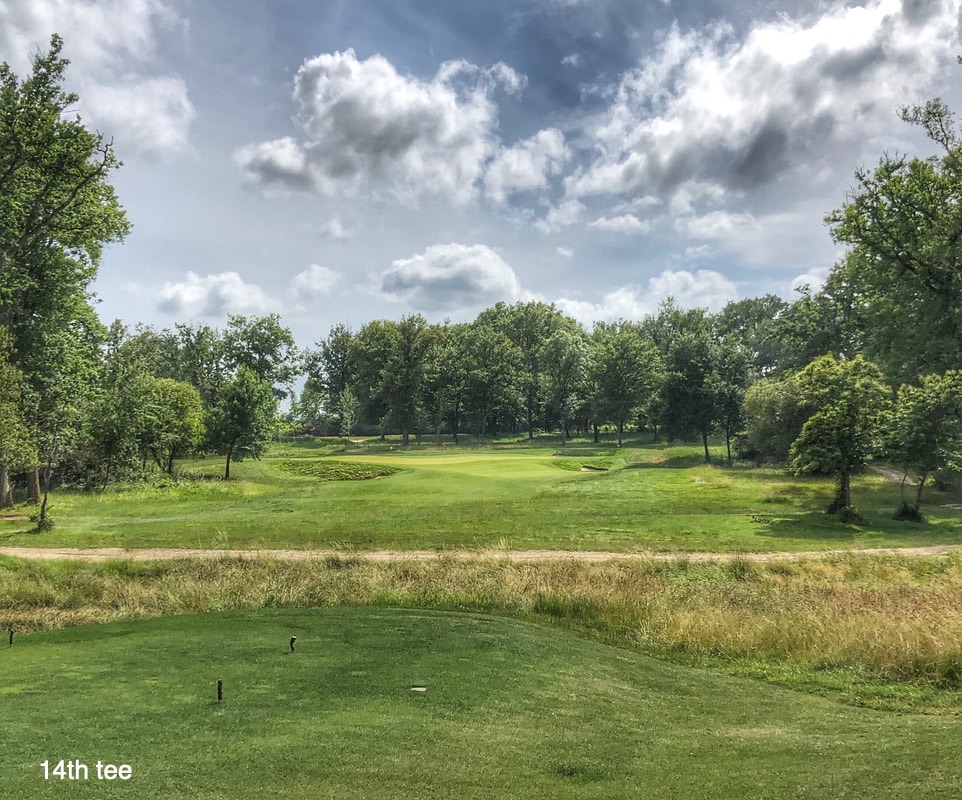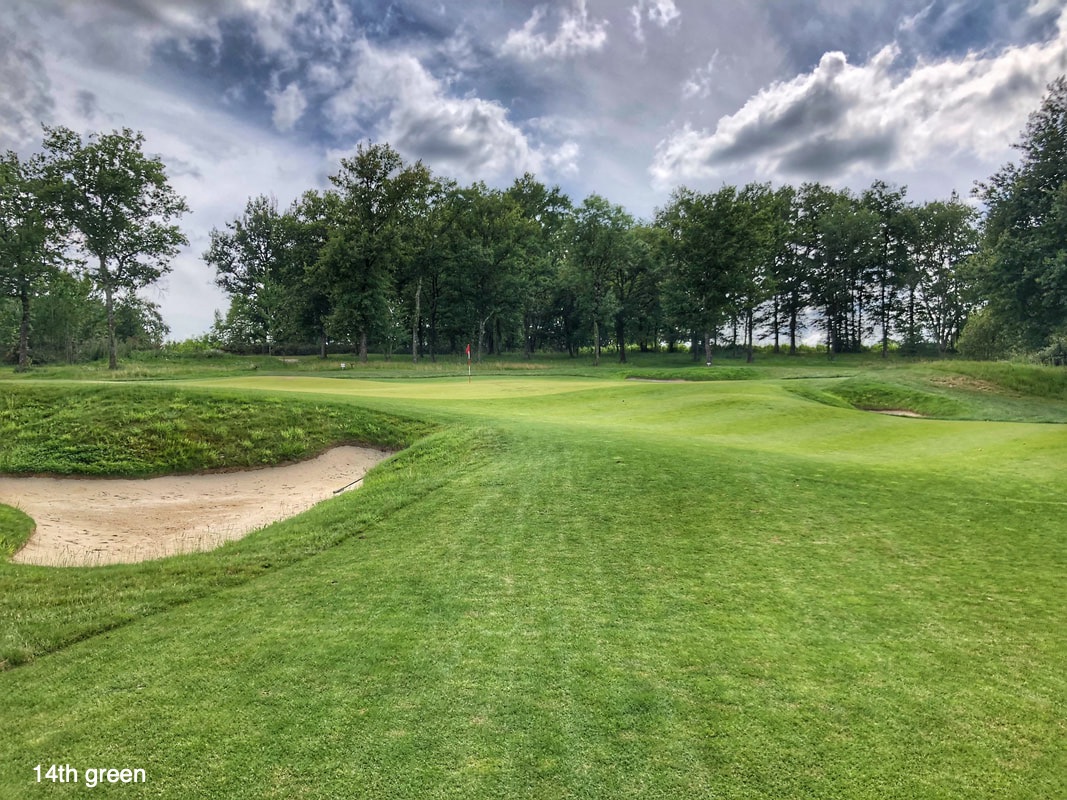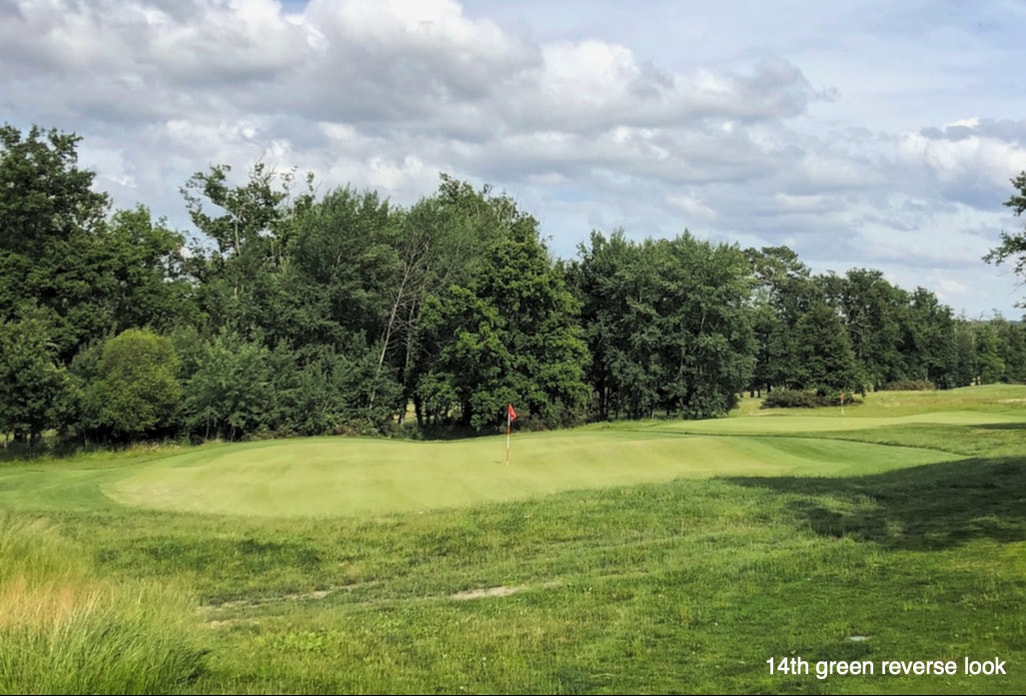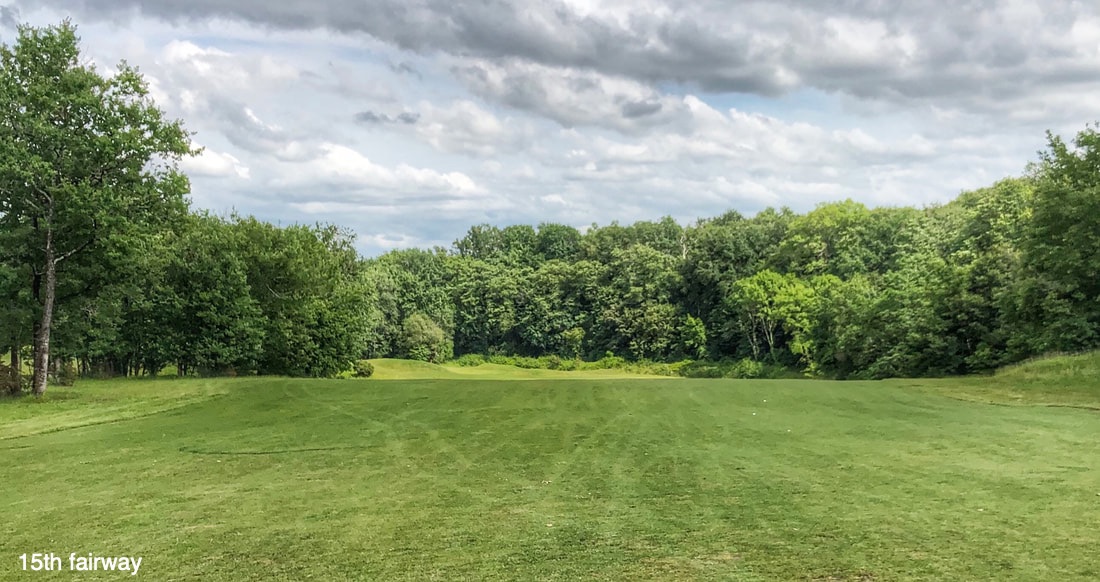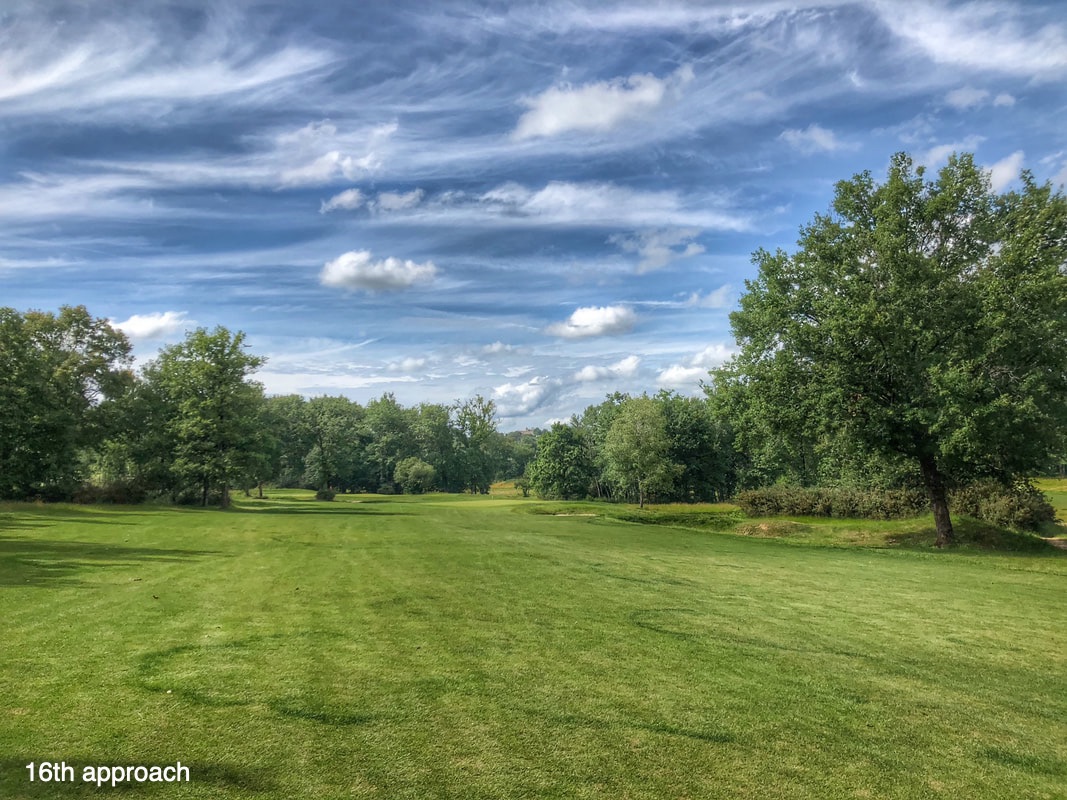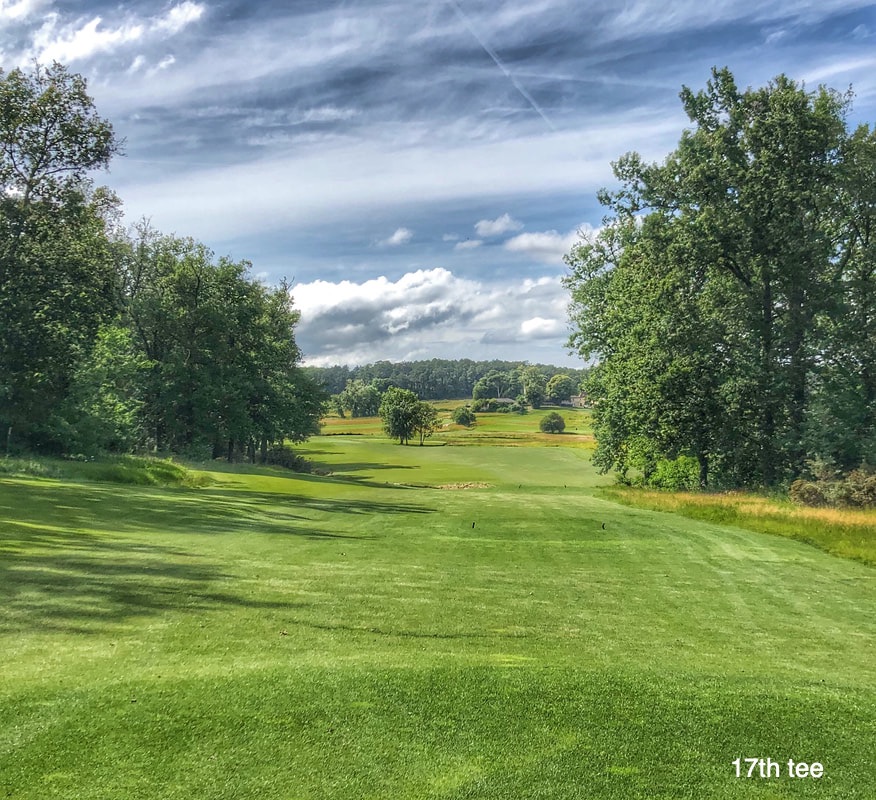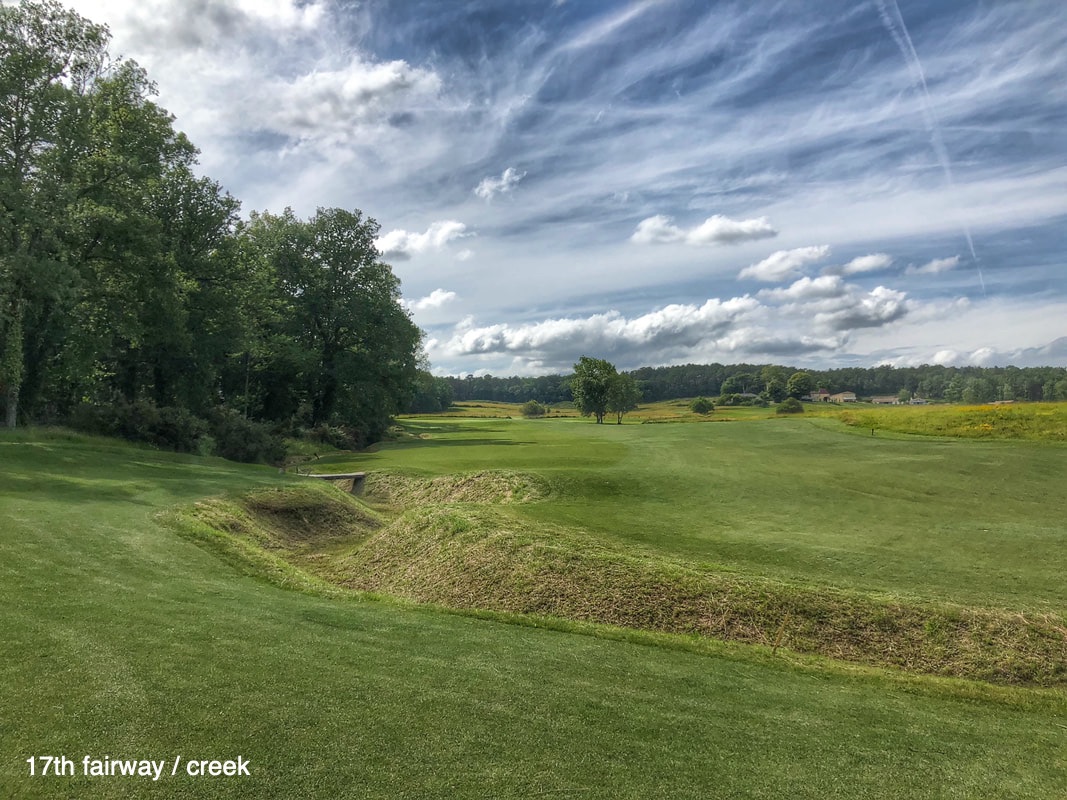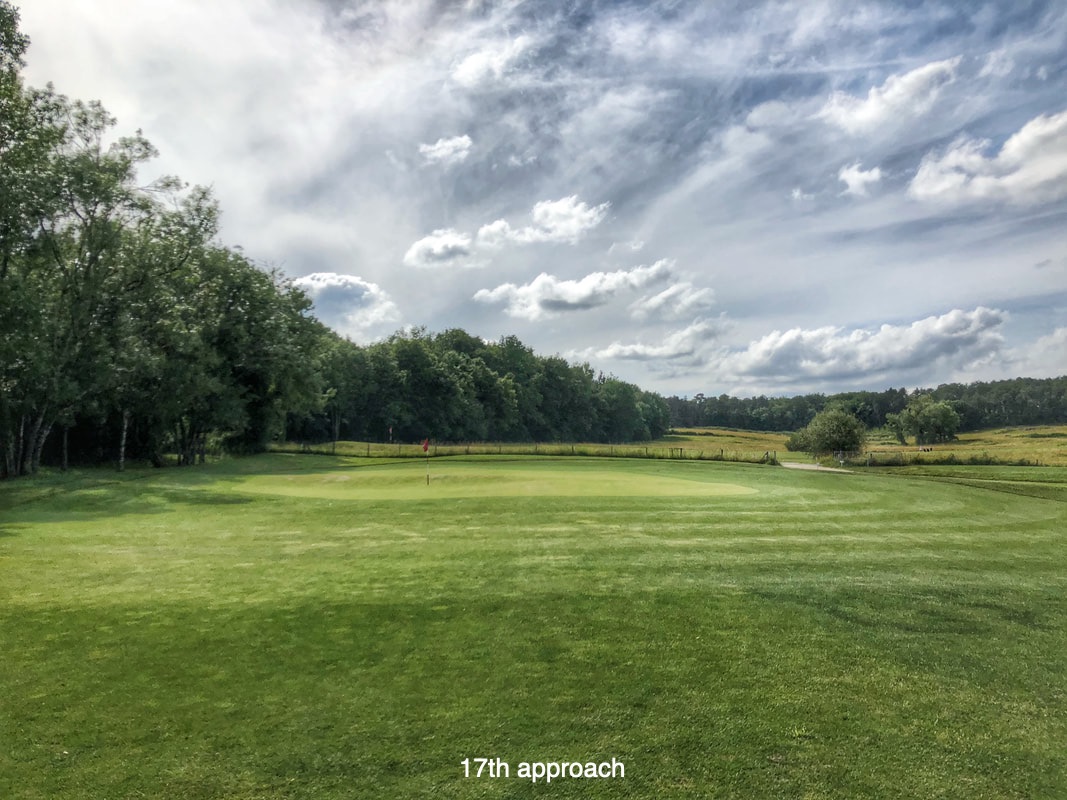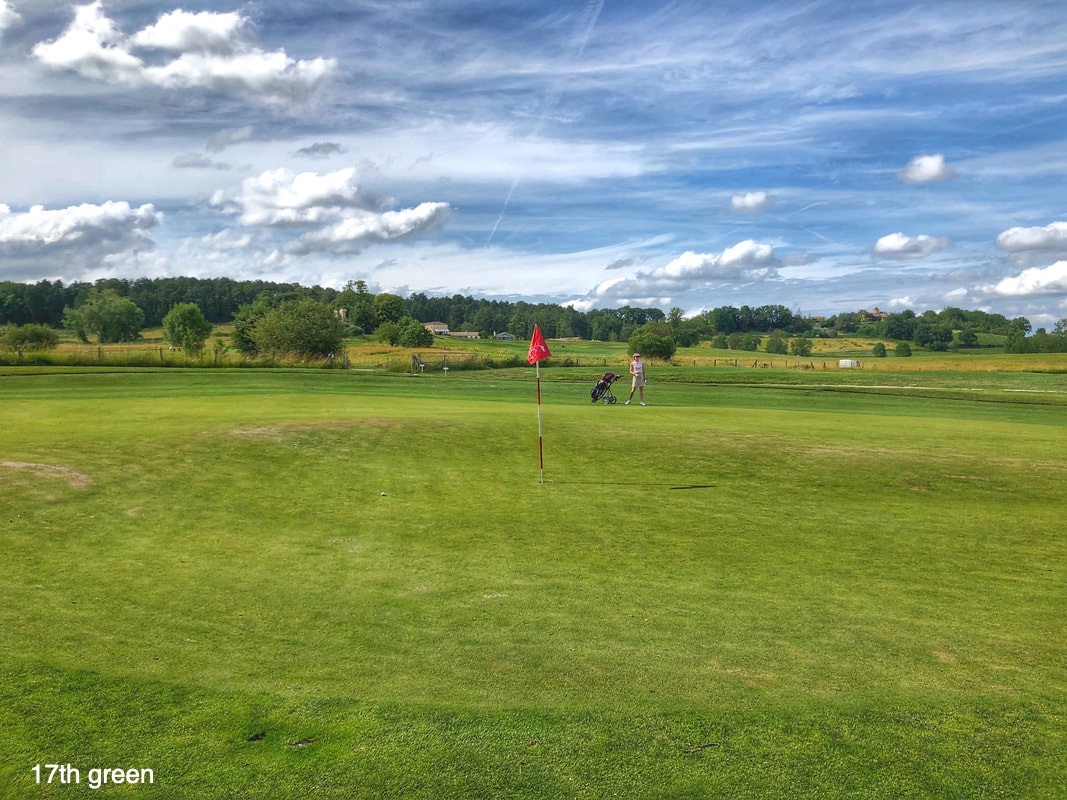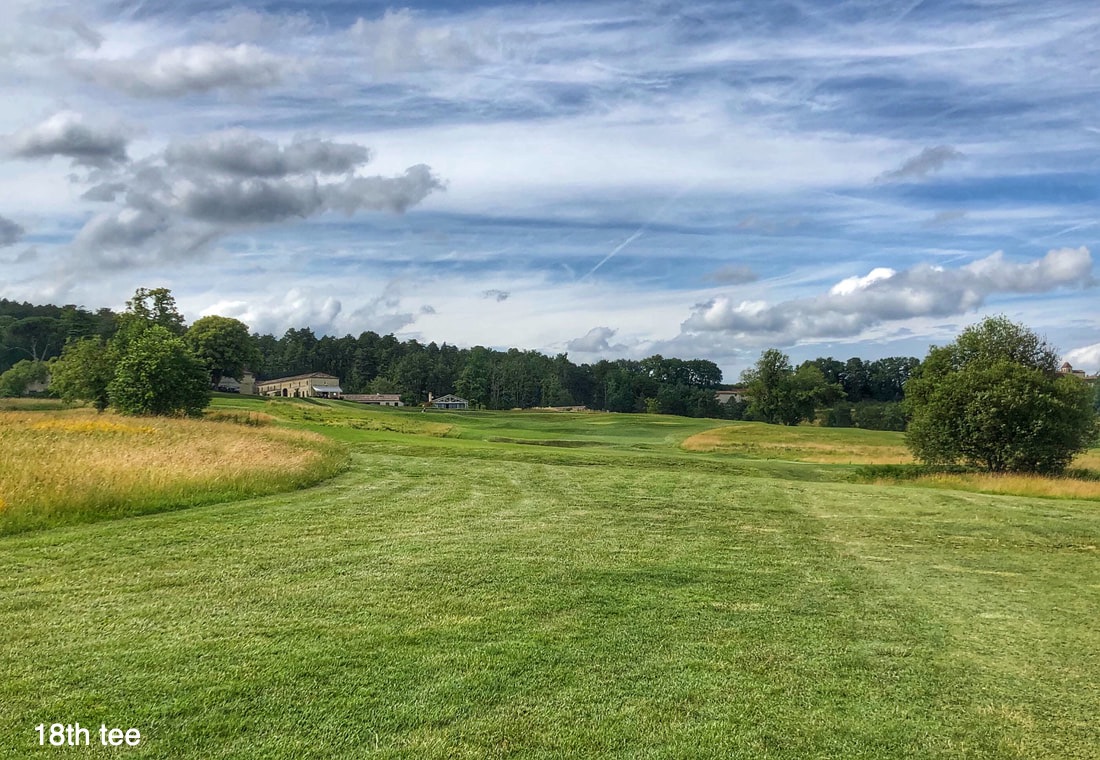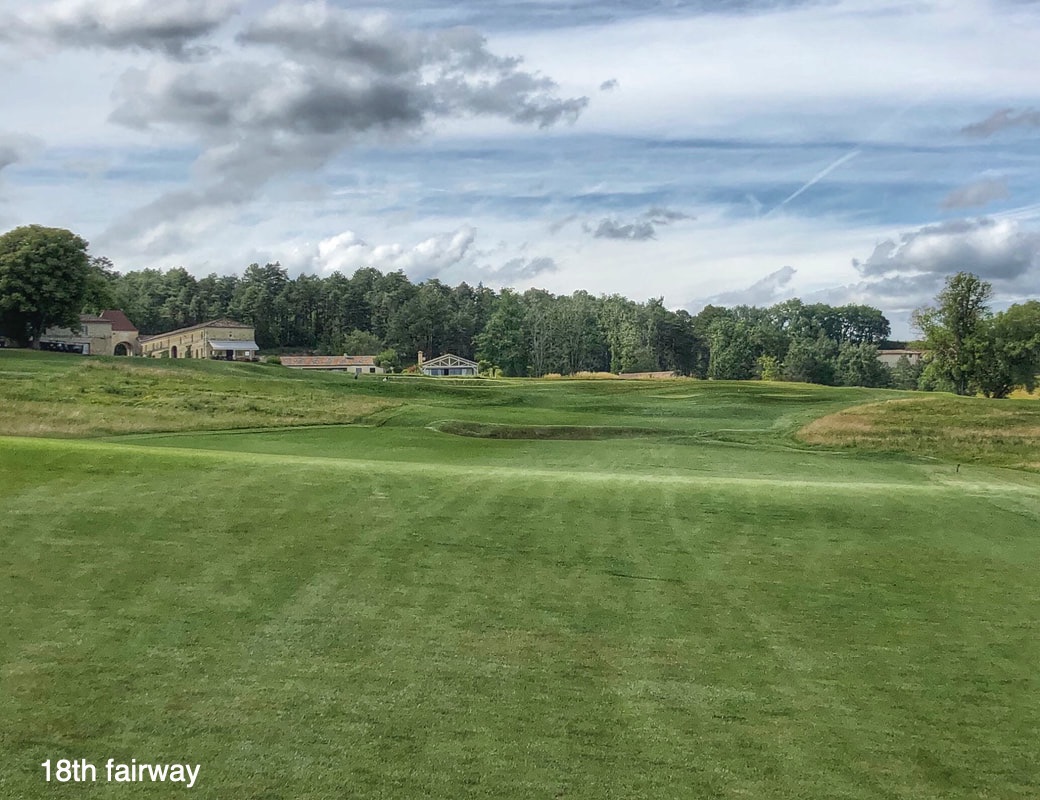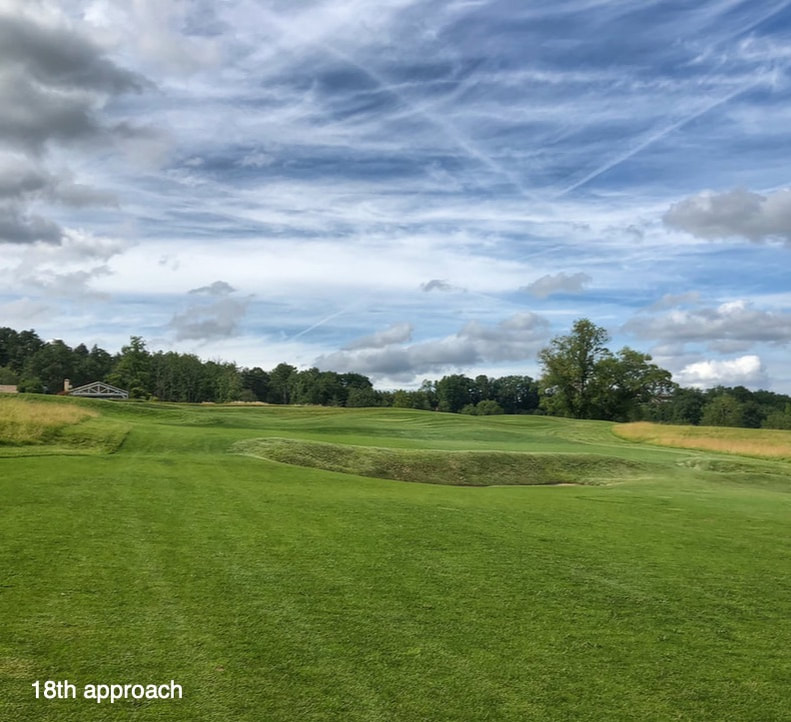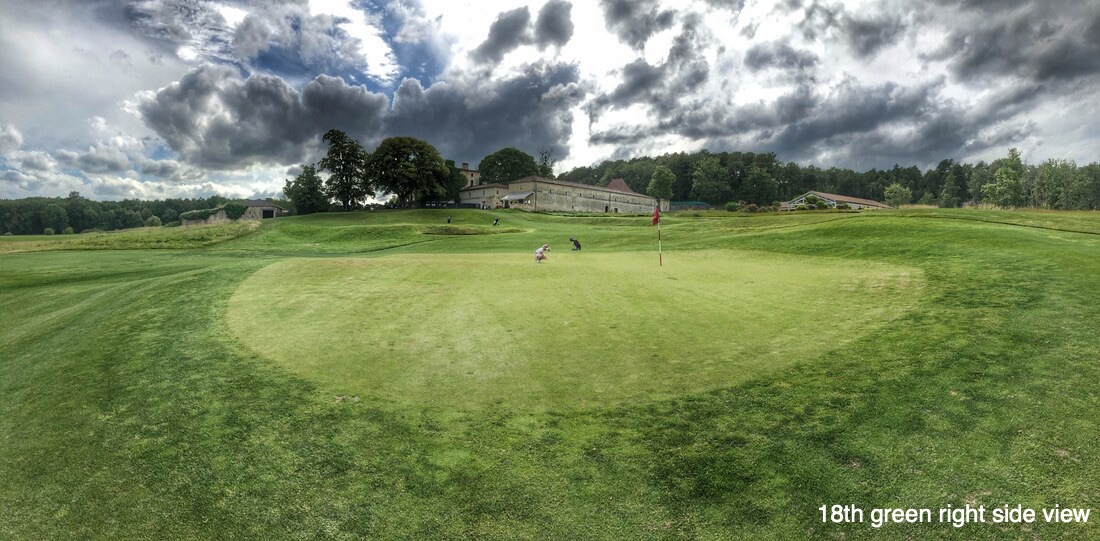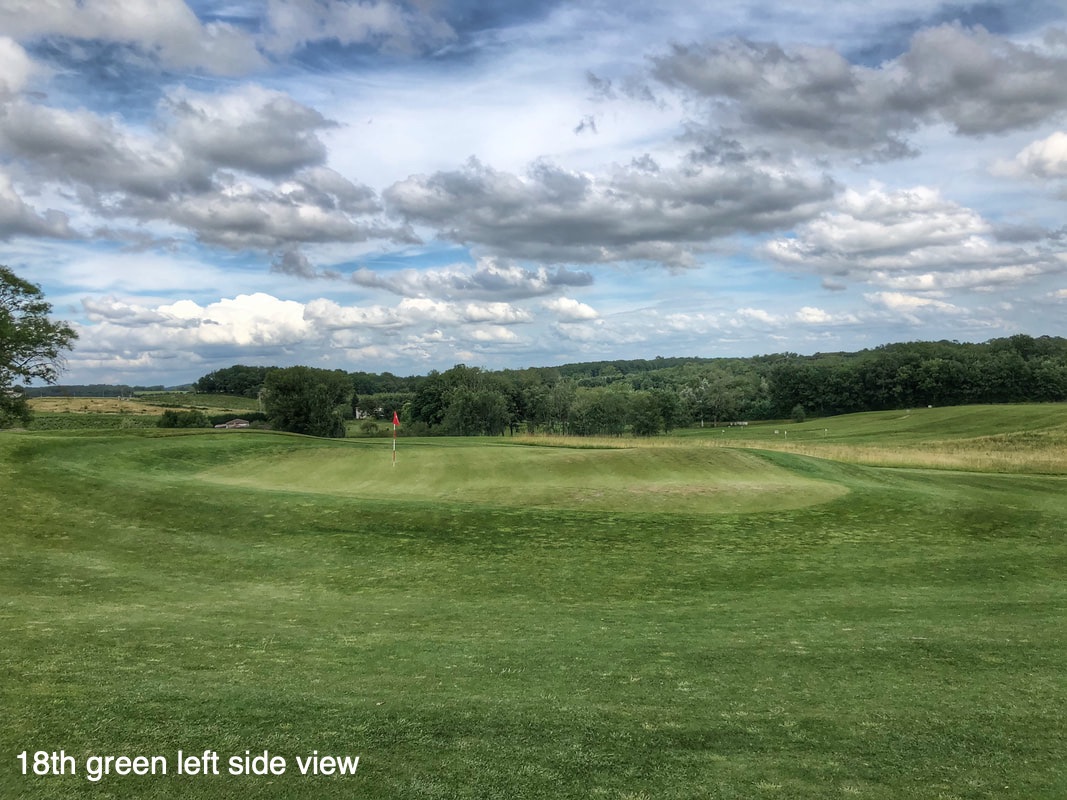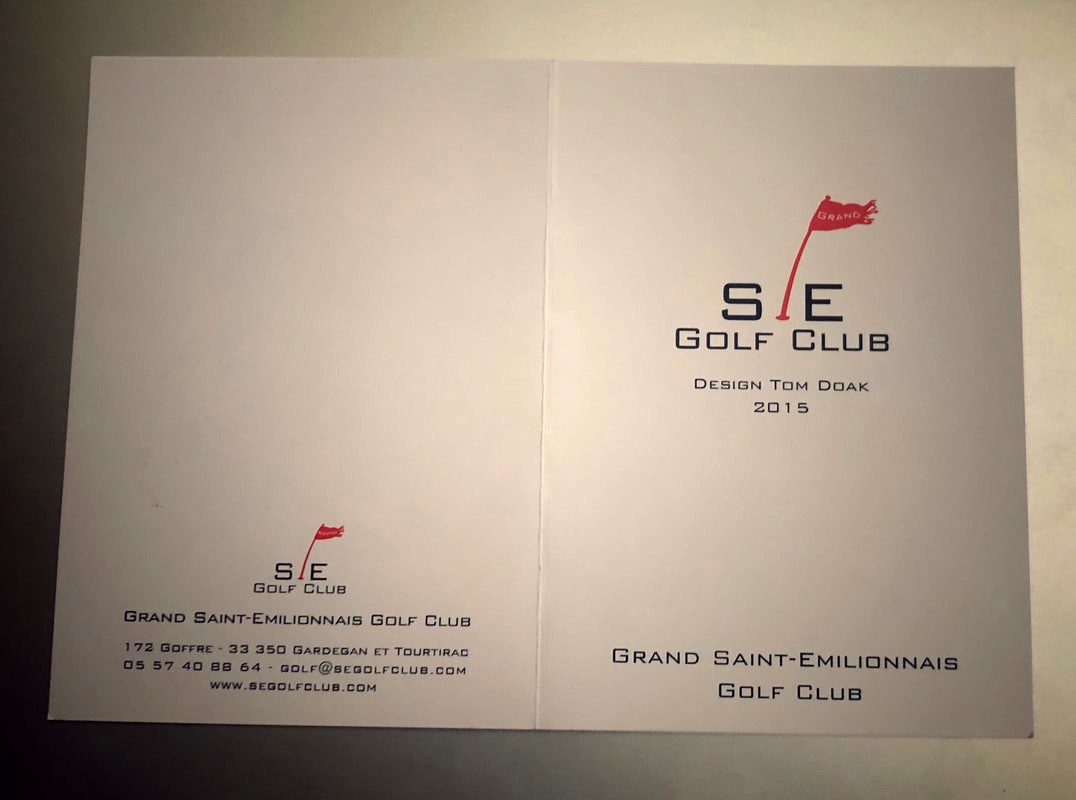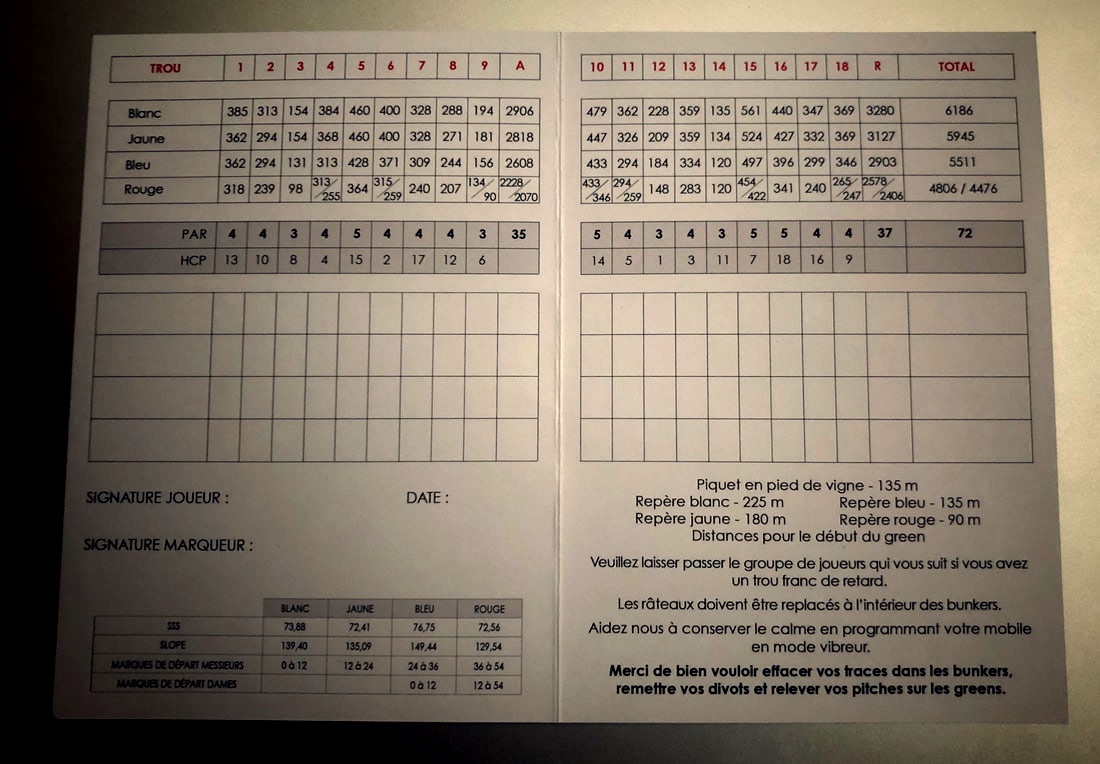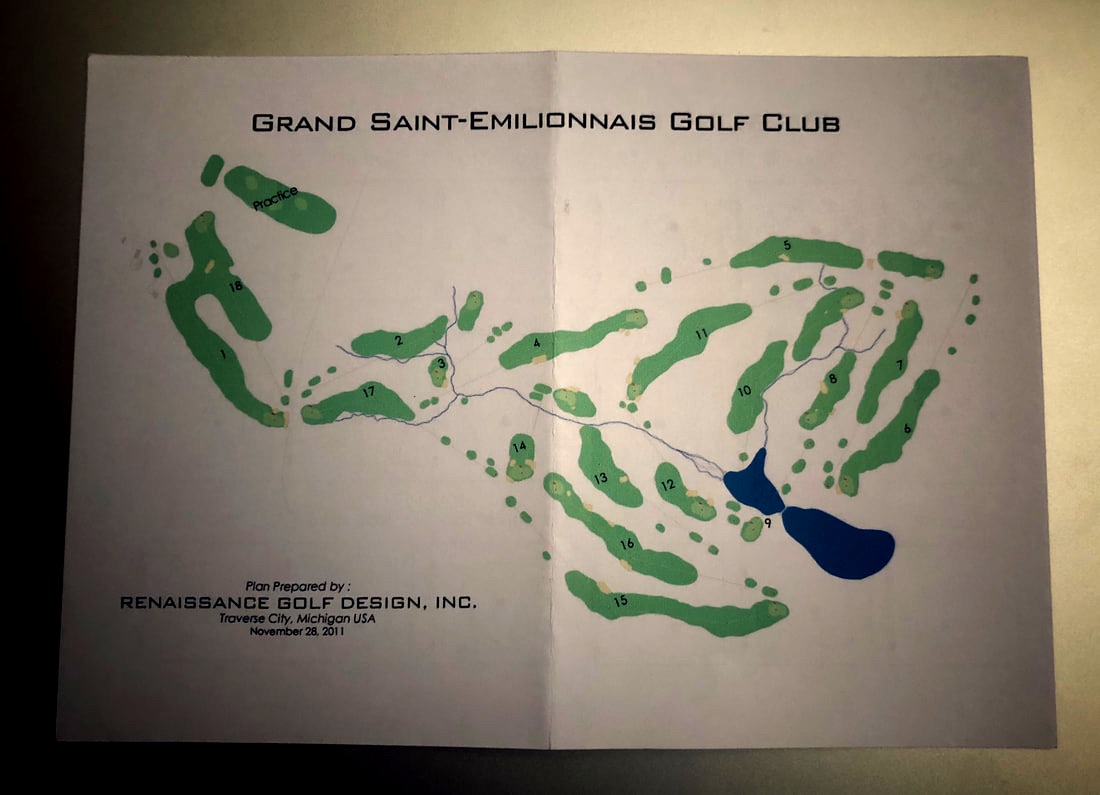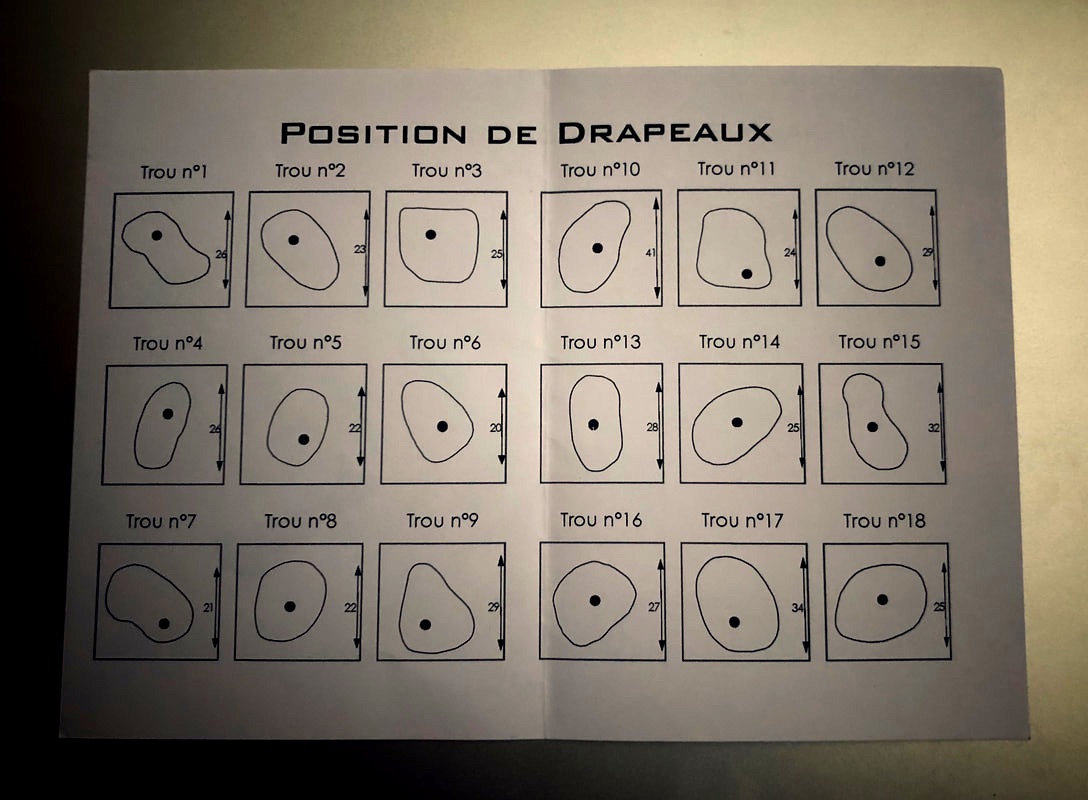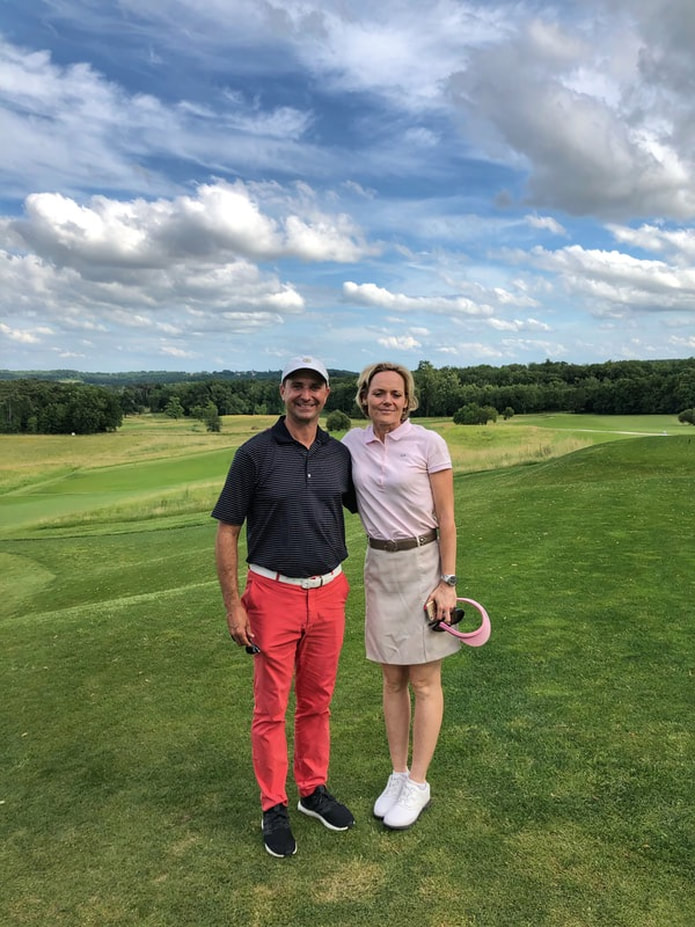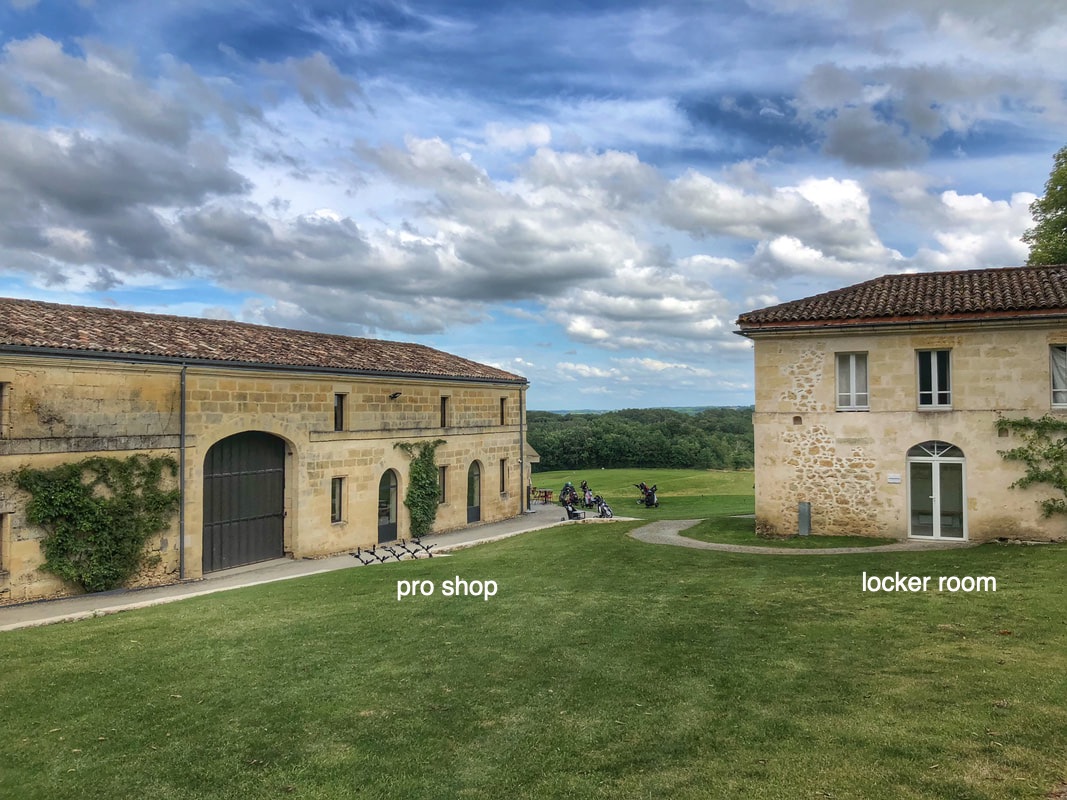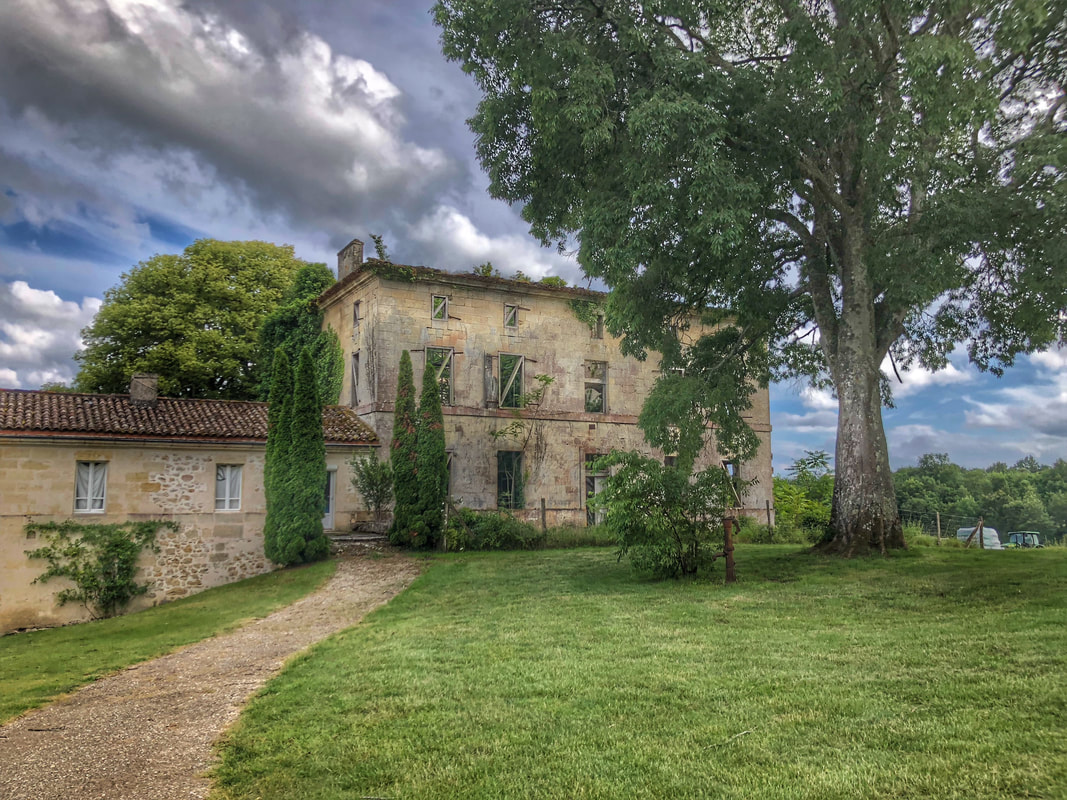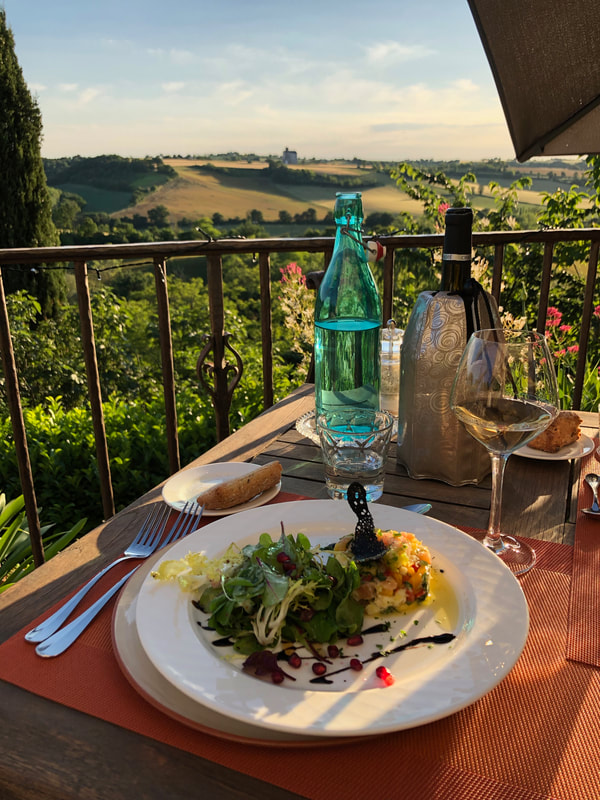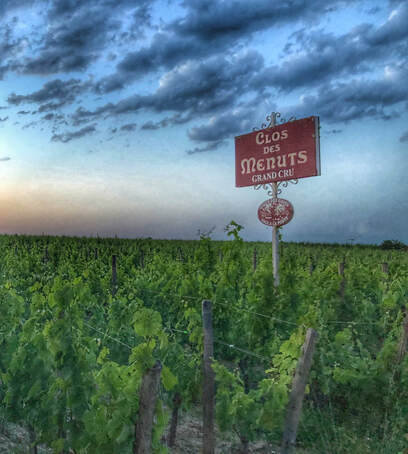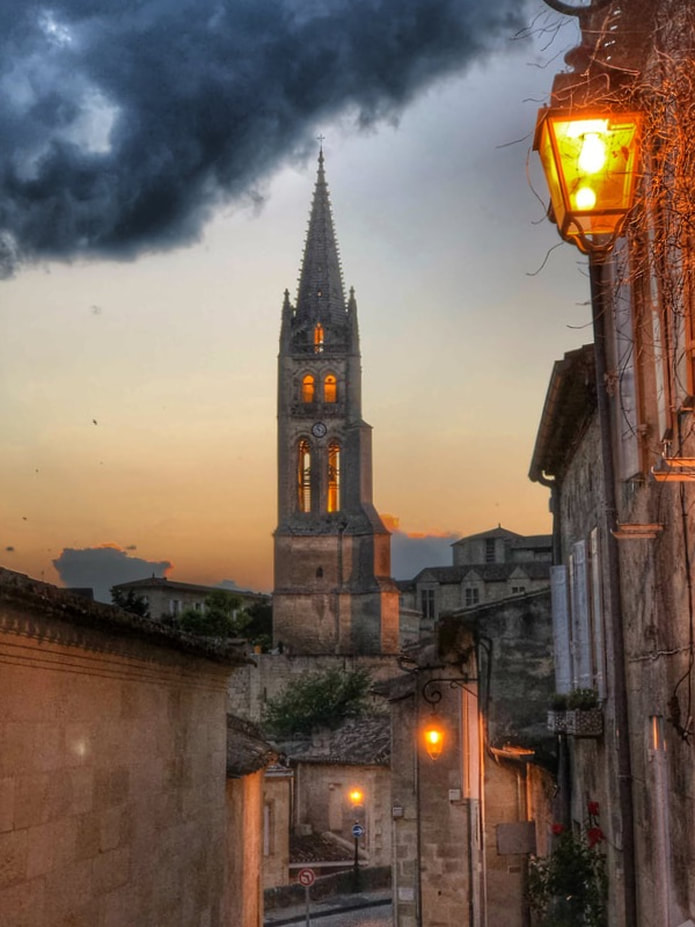|
My newest journey takes me to southwest France and the course Grand Saint-Emilion Golf Club. France is in no way a huge golf country though some of my favorite course designs lie here: Fountainebleau, Les Bordes and Vidauban Golf Club just to name a few. Unfortunately most of the country has little passion for the game but those that do are treated to some truly exceptional golf courses. The course at Grand Saint Emilion was designed by famed architect Tom Doak. This was Doak's first design in France so I was eager to see what he had done here. Earlier in the year I traveled to the Streamsong Resort in Florida where Doak designed the Blue Course, 1 of 3 courses that were each designed by a different designer. All three had there own unique feel but it was the Blue that left me with the most lasting impression. Doak’s ability to frame the hole completely and route the course in such a beautiful way opened my eyes to just how special his abilities were. And now I was about to witness firsthand his French masterpiece. My journey began in the picturesque medieval village of Saint-Emilion, located in the Bordeaux wine region and surrounded by some of the best wineries and vineyards in the world. Let the Grand Cru flow - and flow it did. And it's a good thing because Air France lost my golf bag and clubs on the flight over from NYC and I needed more than one glass of the finest French wine to keep my peaceful spirit intact! Driving literally though vineyards along the way I eventually arrived at a small, simple sign indicating GOLF. I sat in the car looking at the rustic wooden GOLF sign and then at the life-size crucifix facing me. Jesus is showing me the way - this has to be it! Down a long driveway again through vineyards, a scene began to emerge. An imposing chateau and its grounds came into sight. I had arrived at the club. When visiting France I have come to expect the unexpected as golf and life is much different than back in the States. In France, things are inconspicuous yet undoubtedly refined. There was no locker room here at St. Emilion other than a small shower and bathroom and the pro shop was about as big as my locker at my hometown club in New York; it was tucked into the corner of the room almost as an afterthought. What did stand out was the size and quality of the restaurant. Larger in comparison and certainly the focal point, I thought maybe instead of a long-range warm-up session I would loosen up with a glass of local wine and some delectable food. This is one area of life the French have yet to disappoint and the course at Saint Emilion was no different. I decided on a local white wine and a light bite to eat as the temperature on this mid-June day was already a balmy 85 degrees and this was not the time to be bogged down by a heavy meal. My fresh burrata and tomato salad was beyond delicious and of course, beautifully presented. The cheese tasted as though it was made that morning which in this case maybe it was! The wine was subtle and yet complex. The high quality food and restaurant are an excellent representation of this magnificent course. After my meal I made my way to the range for a quick session with yes, a set of rentals (you don't even want to know how many pointless follow-up calls I made to Air France about my lost clubs). Fortunately for me the club was well stocked with a set of new Ping clubs which I was more that happy to give a try. I grew up playing Ping and have always enjoyed using their products. The range was blah as most ranges tend to be with the rare exception. I personally would love to see architects spend more time creating a range that resembles an actual golf hole instead of a wide open field. If you want someone to take the time to practice the game and improve, why would you make him or her spend time on the ugliest piece of land on the property? Why have a wide-open field used as a range if that does not accurately reflect the course? After my range work with my rental clubs, it was off to the first tee. I was met by Kristel, my playing partner for the day who also happens to be the club's owner and a world class golfer. Kristel is from a long line of French golfers with her father, brother and mother all loving the game and taking a huge part in growing the game in France. (Take as second to click this link, the accomplishments of this family in the history of golf is quite impressive) Her father, Gaëtan Mourgue d’Algue, taught her the game at six years old and eventually she made her way onto the European LPGA tour, climbing all the way to 30th place and one win on the tour during her career. Kristel would prove to be a worthy partner and it was refreshing to play with someone of her caliber. We both would be walking and I was perfectly fine with that. For me, walking is the only way to study a new course - it allows me to take in all the subtle features around the course. Riding in a cart, which is certainly frowned upon here, only gives you the visual aspect but walking opens the course up in so many ways. Doak understands this as well and all of his courses are routed in such a way that walking is enjoyed instead of feared – there are no long walks between holes, no mountains to climb and a sense of a perfect balance with nature. I played the tips and Kristel played from the forward tees. Our drives landed in the same spot each hole so the tee boxes had obviously been strategically placed, allowing all players a similar experience despite each person’s different length off the tee. The first hole, in typical Doak fashion, was wide and forgiving, allowing the golfer a wide enough landing area that helps alleviate those first tee jitters. After wishing each other good luck and two smashing drives, we were off. The first thing I was struck by was the fairway grass. This was not some sodded C.C. This was local fescue grasses cut down to a consistent height, leaving a more Scottish feel than anything else. At first glance the novice golfer might think wow, I thought it would be better grass, but after playing 18 holes this appearance proved misleading as I never had a poor lie on any of my shots. I was pretty content with myself after hitting my approach shot to about 15 feet only to witness Kristel one upping me and hitting her shot to about 3 feet for an easy birdie. Nice! I missed my putt and realized a little home course advantage goes a long way. The second hole is a beautiful serpentine shaped par 4. A small creek winds its way throughout the course creating an ever-present hazard. Fortunately, I hit a perfect little fade down the right side, avoiding all the trouble. The 3rd hole is a very challenging par 3 with the creek fronting the green. The green itself is separated into three different quadrants, each just as challenging as the other. I hit my ball directly at the stick but carried it just a bit too far, leaving me with a precarious downhiller for birdie. Unfortunately, putting with anything other than my custom made Edel putter has always been a challenge. Even more of a challenge with this rental set. Such was the case on this putt. Starting on the 4th hotel the course begins its gentle climb up the French rolling hills. The 5th hole par 5 continues the climb until finally at the green you reach the course’s highest point. I really enjoyed this short par 5 as the landing area has one of the only 33 bunkers on the course strategically placed dead center in the fairway. Funny how most of the time when there is no bunker in the middle we golfers can’t seem to find the fairway, but as soon as one appears your ball somehow always finds it. The 6th hole is a blind drive setting up a pretty special approach. The green has a big mound fronting the left side blocking your view of the green. This look gives an otherwise ordinary hole a unique view. The 7th is a short uphill par 4 that I felt was a bit underwhelming but every course has a few misses just like our swings, lol. The 8th is a wonderful risk reward par 4. Just under 300 yards with a cleverly placed bunker about 20 yards short of the green. Any shot not carrying all the way up on the green will funnel down to this little pit of misery. This hole brought back memories of the 17th at Crystal Downs, which I’m sure offered some inspiration for this hole’s design. The 9th is a par 3 across one of two manmade ponds for irrigation. The green is a rumpled mess of goodness testing even the best player's ability to make a good read and putt. There is no heading back to the clubhouse after 9. Instead the routing continues on. The 10th is a slight dogleg right par 5. The first challenge is navigating the same small creek seen earlier that winds its way down the right side of the fairway. This puts just enough pressure on the player trying to cut more of the corner than they should. The green is tilted from back to front somewhat severely and hitting your shot long will, in most cases, lead to a lost shot as stopping a chip will certainly be a challenge. The 11th hole is one of my favorites. A dogleg left that climbs upward then in the fairway descends sharply to the green. The green and its troubles are slightly hidden. At first glance it looks like a bump and run might be the best approach but Doak has cleverly placed a mound in front of the green to stop just such a shot. 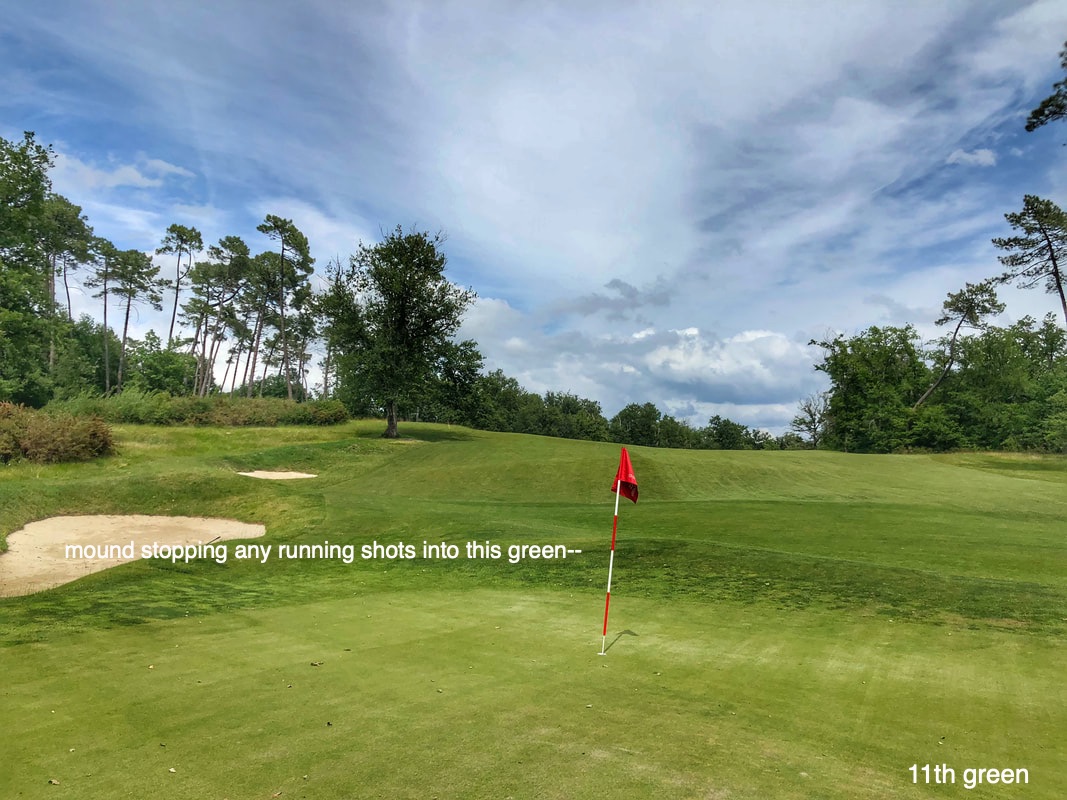 The green is also pitched away from you so only the most perfectly struck shot will hold the green. Shots that roll off will be treated to a nasty little bunker just off the back. Doak himself took numerous shots out of this bunker just to make sure it wasn’t too small. I fell victim to his mound in the front leaving me a delicate flop shot that I pulled off perfectly. Sadly, I missed the six foot downhill snake needed to save par. The 12th is a redan-styled par 3 that offers the player plenty of room to the right for a bailout. Not surprisingly, you would never know this standing on the tee. Doak is a master at presenting a look that will scare the bejesus out of you only to find out your fears weren’t warranted. The 13th is another favorite of mine. The tee shot is no grip it and rip it because of that winding creek again about 280 off the tee. This serpentine fairway is more about precision and placement. Placing a ball down the right side will set you up for a testy approach to one of the hardest greens to hit. The shot in will be off a slight sidehill lie only increasing the challenge. The green’s shape is that of a horse saddle with bunkers where your legs would be. Any shot not landing in the middle is most likely to roll off into one of the bunkers. I made one of my best shots of the day and had a 20 footer left for birdie. The 14th is a par 3 that from the tee looks like a sideways Biarritz. But once again Doak’s deception is at work. Instead, it’s a multi-tiered green that looks like my granny’s wrinkled face. The 15th is a par 5 that offers some real risk reward. It’s also Kristel’s kryptonite, proving a struggle each time she’s played and allowing her only a handful of birdies since the course first opened. After hearing that story I was up for a good challenge so I decided to cut off the dogleg left by taking it over some tall trees and was rewarded with only 220 yards left for my second shot. After running my 4 iron up on the green I had about a 50 foot eagle putt that just lipped out! The golf gods were definitely smiling upon me this day…and on this hole in particular. Kristel and I both had a good laugh. Her hardest hole on the course and I just birdied it! As we finished the hole Kristel’s father Gaëtan Mourgue D'Algue drove up in a cart to introduce himself and see how I was enjoying the course. It was a true honor to meet such an admired figure in French golf. I told him that I was truly impressed with not only the magnificent golf course but also his family which was so welcoming to me. That day I had met his son on the first tee and saw his wife playing with a group of ladies on the 6th hole. This family approach to the game is quite special and I only wished more families could embrace this wonderful game in such a communal way. The 16th hole is a short par 5. The approach is quite difficult as the green has two tiers and the green is sloped from front to back making it hard to get a ball to stay on the front of the green when the pin is there. I found out the hard way by hitting it a bit too far, causing my ball to roll off the back of the green and leaving one of the more difficult chips of the day. Walking away with a bogey after finding the dead center of the fairway was a bit of a back breaker after just getting a birdie on the previous hole. The 17th is an all-world par 4. A slight dogleg left that climbs gently upward to the green. The small creek which has been a constant presence shows itself one last time as it bisects the fairway at the start then follows up the left side. I hit a beautiful tee shot leaving me only 100 yards into one of the larger greens on the course. My putting struggles continued and a par was all I could muster. The 18th is your last chance for redemption. The tee shot is pretty straight forward and plenty wide enough for just about any golfer. Doak does a great job on all his courses of giving you plenty of room off the tee. He does, however, ask the better player to find the correct side of the fairway if you’re going to score. I took my drive up the left and had about 150 yards to the hole. I miss-clubbed myself and came up short leaving a challenging chip to this punch bowl green that I fortunately got within gimmie range. I finished with a par and an overall score of 3 over par. Kristel, however, finished with an effortless -2. Very impressive indeed. I was just happy not to embarrass myself playing with a rental set against an ex-European tour pro. Once the round was over we sat on the veranda and had a glass of wine while discussing the state of the game of golf in France and around the world. Kristel told me about how Tom Doak became the designer. The course had been a dream of her father's for years and once he acquired the land, the process of securing the permits became a ten-year battle (an all too familiar story of European bureaucracy). Finally, after years of convincing the government to grant the permits, the time came to find an architect. By chance someone mentioned that they knew Tom Doak and a week later Tom was on the phone listening to the proposal. The family explained their financial limitations and Tom listened. He had never considered building a course in France due to the difficulties of dealing with the French bureaucracy. But when he heard that the family had tackled the hardest part of the process and had already acquired the permits, he gladly accepted the job and told the family he would build this course being mindful of their frugality but without sacrificing design quality. An example of this is Doak masterfully only putting in drainage that was absolutely necessary and doing the same with the bunkers, only putting in 33 strategically around the course. The grass is a hearty fescue that needs little watering. All of this leads to a design that blends perfectly into the terrain. The course is naturally beautiful and one of the best routings I’ve seen in quite a while. Doak's minimalist style will be heralded as time goes by and the over-watered, over-designed courses of present day will become a thing of the past. The course of Grand Saint-Emilion, set in the hills of the Bourdeaux region, is a 21st century example of what a great course in the modern era should be. Hats off to Kristel and her family and Tom Doak for bringing this special place into existence. The love of family and love of great golf is alive and well here in France. An interesting story about the Chateau (pictured above and below) and its history is that during the 1950s the longtime caretaker of the property was asked to vacate his position when a new owner purchased the property. Upon hearing the bad news, he decided if he could no longer inhabit the property neither would anyone else. In an act of desperation he set fire to the Chateau, destroying it and its wonderful history. The French certainly don't let go easily! The Mourgue d’Algue family has slowly been restoring the buildings and when finished, this will be the members' locker rooms. Grand St. Emilion has also been working with another noteworthy club in Bordeaux called Golf Du Medoc, a 36 hole resort with two distinctly different designs - one being that of legendary designers Bill Coore and Rod Whitman. Both clubs have teamed up to promote the region and the interest in golf. Together these two great golf destinations, Grand St. Emilion and Golf Du Medoc, should be on anyone's list while visiting this region of France. After the round was over it was back to Saint Emilion for a three-hour Michelin star dinner at Logis de la Cadene - some of the best food of the trip. A better day may be had by some but for me this day will be a memory not soon forgotten. This year I was looking for a new driver shaft and I am happy to say I found one. The Fujikura Ventus shaft is in a word AMAZING! I picked up 15 yards and my dispersion is so much tighter. I really can't say enough about these shafts, I was lucky enough to have a private fitting last month with the company and was blown away by the results. Definitely give these shafts a look if you're thinking of an upgrade on your current set up.
0 Comments
Your comment will be posted after it is approved.
Leave a Reply. |
I started this blog after years of traveling and growing frustrated with the limited amount of information about the courses I wanted to play. I wanted to see all 18 holes in pictures before I played the course and to learn a little about the area surrounding the course. I wanted a complete immersive look into where I was going to play. Since no one else was doing this I decided to do it myself. The courses I choose for this blog are the ones that stood out among all the thousands of courses I have played. Not all will be considered architectural masterpieces but they all offer something unique to the golfing world. I hope this blog inspires you to get out and see the world and maybe sneak in a round or two along the way! 
Categories
All
|
Proudly powered by Weebly


